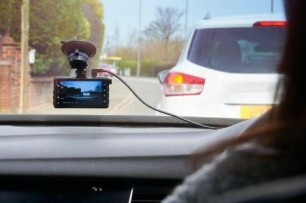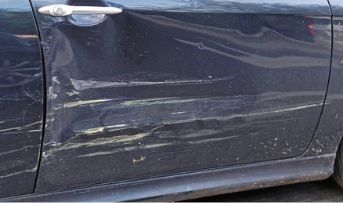General Insurance Blogs, Articles & Updates by - Magma HDI
Have us call you
- RENEW YOUR POLICY
- BUY NEW POLICY

Here are a few flu-like health conditions you must be aware of
You're familiar with that feeling when you're on the verge of becoming ill. You feel worn out, like something is wrong, and you're colder than usual. And at that point, you start to wonder just what is happening. Is it the cold, the flu, or the RSV? Or might it just be allergies?
When you first start to get sick, it can be hard to tell the difference between these illnesses. Surprisingly, they have identical symptoms. Find out in the following article what might be causing your flu-like symptoms and when you should visit a doctor.
What are the symptoms of flu?
● Nausea, vomiting, and diarrhoea
● Muscle aches and pains
● Sore throat, running nose, or cough
● Swollen lymph nodes in the neck
● Fever
What other conditions are like the flu?
1. Cold:
Most people have experienced many episodes of the common cold. A wide variety of viruses brings it on. Symptoms of a cold include a running or stuffy nose, a sore throat, coughing, sneezing, headaches or body aches, and fever. Since there is no way to tell if you have a cold, most treatments are meant to ease the symptoms.
2. COVID:
The symptoms of COVID and the flu sometimes coincide. In its early stage, COVID symptoms are more like those of a cold than of the flu. Breathing difficulties and loss of taste or smell are two symptoms that are more prevalent with COVID.
3. Pneumonia:
Both viruses and bacteria can cause pneumonia. Cough, fever, shortness of breath, and exhaustion are the primary signs of pneumonia. It's also crucial to remember that pneumonia can develop from the flu, COVID, or a simple cold. This is only sometimes the case, though. Finding out if you have pneumonia requires a chest X-ray.
4. Bronchitis:
A lower respiratory infection or inflammation is referred to as "bronchitis." It is caused by a virus that affects the lungs, but the symptoms can last even after the infection is gone. It may be caused by persistent inflammation. Your symptoms and other medical issues typically determine your course of treatment. Steroids and inhalers are helpful for some people.
5. RSV, or respiratory syncytial virus (RSV):
RSV is a widespread virus that manifests as flu-like symptoms. In grownups, it frequently resembles and feels like the common cold. But it can hurt the lungs and cause breathing problems in young children, especially those under 6 months old. Infants with RSV have fast breathing and apparent behavioural abnormalities. They could have difficulties in eating or seem more worn out than usual. A hospital stay may be necessary for oxygen and constant monitoring during treatment.
When should you go to the doctor if you're experiencing flu-like symptoms?
● People with severe lung or heart diseases
● Very young children
● Older adults over 65
● Women who are pregnant or within two weeks of birth
● People with neurologic abnormalities, such as a history of seizures
If you experience any of the following, get medical care right away:
● Dizziness
● Pressure in the chest or stomach
● Extreme muscle tenderness
● Dehydration and inability to retain food
● Difficulty breathing or fast breathing
● No improvement in symptoms after 3 to 5 days
A healthcare professional can test you for many diseases you might have and ensure you get the right treatments. Mainly due to change in seasons, flu-like symptoms are frequent. It could be hard to tell the difference between the flu and other diseases like COVID, the common cold, or strep throat. If you have the flu but aren't sure, see your doctor for a check-up.
You can speak with your physician about receiving a flu shot if you fall into one of the high-risk categories. Your medical bills, pharmaceutical charges, hospitalisation costs, and other expenses are all covered by health insurance. Health insurance in India is now more than just a choice—it's necessary to get the best medical care without worrying about how it will affect your finances.
Click HERE to buy the best health insurance in India.
Disclaimer: The information provided above is for illustrative purposes only. To get more details, please refer to policy wordings and prospectus before purchasing a policy.

Here are a few exciting ways you can organise your home for this new year
It's the new year, and one resolution that we all commonly try to make is to keep our homes organised and well-maintained. A well-organised home is the key to an organised and healthy you. Good home organising ideas with the proper implementation strategy can give you the perfect home without spending a bomb on it.
Do you also have a new year resolution of organising your home well? Here are a few interesting ways you can achieve it this new year.
1. Take one room at a time:
Organising your entire home can be an uphill and time-consuming task. You will get confused about how and where to start and what changes to incorporate. Start with organising your home by taking small steps. Start from one room at a time. You can focus better and devote time to individual rooms separately. This will make the entire home organising task less daunting and easily manageable.
2. Hanging spaces:
Create multiple hanging spaces in all your rooms, galleries, and sitting areas. You should have appropriate space to hang your jackets, blazers and other clothes so that you do not have to put them here and there on the bed, side table or the floor! This will make your rooms clutter-free and look neat and clean. You can put a peg board and hang your hats, caps, shirts, t-shirts, etc., on it. This will look nice and organised, and you will be easily able to locate all your stuff too.
Hanging spaces in the kitchen can be very useful as well. Paste iron hooks behind the main kitchen door and cabinet doors. You can hang the dusting cloth, small pans, spare packets, etc., on them and not store or litter them in the open. They will stay behind the doors and not be visible to all.
3. Learn to donate:
Each of us has the habit of stocking up multiple useless things we don't need and creating clutter in our wardrobes and even out in the open. For example, you might have stacked up dresses from the past that do not fit you anymore. Since you have limited storage space, you keep putting the new clothes you buy on those same shelves. The clothes start tumbling out of your closet every time you open them.
Learn to let go and donate! Your old clothes will not get bigger on their own, nor will they shrink. Donate the extra clothes to the needy in an orphanage or an old-age home. It will feel great to help, and your wardrobe will be lighter and more organised.
4. Go green:
You may buy indoor plants in fancy, beautiful pots and use them as decorative pieces around your house. They will provide fresh air while making your house green and beautiful. You can also hang a few pots in the stairway and outside the main entrance to give a great look.
5. Proper marking:
A key to being organised is keeping everything labelled and properly marked. You can start with the kitchen and put labels on each storage container. This will make it easy to figure out what is inside each container, and the items will not get mixed up.
You can also label items such as photo albums to instantly know when these photographs were taken, even after several years. Use labels for marking important files and documents, first aid kits, etc., so you can easily find them when needed.
Start with one thing at a time, and you will enjoy organising your house this new year. Even if you do little at first, do it with full dedication and focus. This will ensure that your efforts do not go waste and that your home looks the best.
Another important way to get organised this new year is by opting for home insurance India policy. It protects your house and all your valuable possessions from damages caused by fire, theft, earthquake, etc. Choose the best home insurance India and protect your valuable asset from mishaps.
Click HERE to buy reliable home insurance India.
Disclaimer: The information provided above is for illustrative purposes only. To get more details, please refer to policy wordings and prospectus before purchasing a policy.

These activities can promote your child's early development
Children give purpose to a family. As they carry their family's legacy, their development is always of utmost priority around the house. Parents focus on saving up for their children's education, health, marriage and fulfilling their other needs and demands. They try their best to give their children more than what was provided to them.
It is said that a child reflects the culture that is practised in the family. They imitate what they see at home. Their cognitive abilities start developing in the early stages of life. So, it is essential to engage them in various activities which stimulate their body and mind. These practices will help them utilise their time fruitfully and give them a wide range of things to explore.
Wondering how to keep your child engaged? In this blog, we will discuss a couple of activities to promote your child's early development.
1. Get your kids into musical:
Music creatively stimulates your child's brain. It helps them understand and capture different tones, rhythms and sounds. You can help them learn nursery rhymes, numbers, alphabets, etc., through music. This can shape their cognitive abilities.
The tunes will help them remember things easily. Having a fun, musical experience makes things exciting and lighthearted.
2. Lots of pictures:
You can put up many pictures in your child's room. Having visuals around will stimulate their brain. Associate the images with words, for example, a family tree. Discuss the pictures and the terms frequently. This will help them identify and relate the words to images and vice-versa. It's a fun learning technique that many experts prescribe.
3. Colours and textures:
Humans respond to colours and textures. Toddlers' brains are more receptive to sensory stimulation, including touch, vision and taste. These sensations help them understand their surroundings. You can use bold letters and dark markers to help them understand patterns, notes, etc.
Parents can use textured materials for decor and furnish their child's room with their favourite learning and playtime materials. For example- you can use cotton balls, sandpapers, beans, etc.
4. Play:
"All work and no play make Jack a dull boy" is a saying we've all heard. Physical movement holds as much importance as mental development does. Engage your children in outdoor activities to help them get familiar with the environment and observe the things around them. This further allows them to recognise certain situations and people when interacting outdoors.
5. Organization:
Arrangement and organisation help your kids understand the importance of cleanliness. At the same time, it trains their mind and builds organisational skills, which will prove to be helpful for them in the future. You can start by helping them understand how to place their toys, small clothing items, activities' kits, etc.
Spend time with your children and make labels for different drawers and bins. And then develop their habit to place their stuff in the assigned places. This is how you can smartly introduce discipline in your child's behaviour.
Other activities to promote your child's early development include planning a scavenger hunt, measuring their growth, numbering the days of the week and months, etc. These activities create an enjoyable learning experience and make your kids excited about future learning. Activities and hobbies help foster and strengthen the bond between parents and their children and make the interaction hesitation-free, exciting and full of love and care.
As parents, you will always be worried about your children's health. You take many measures to ensure they stay safe. And to make sure that they remain unharmed during unprecedented circumstances, it would be beneficial to purchase personal accident insurance online.
This will allow your children to focus only on learning, imbibe new experiences, and be playful without any worries of being hurt. Don't let any hurdle hinder the path to your child's development.
Click HERE to know more about how you can buy personal accident insurance online
Disclaimer: The information provided above is for illustrative purposes only. To get more details, please refer to policy wordings and prospectus before purchasing a policy.

Six effective home remedies for sensitive teeth problem
Sensitivity is a common existing dental issue faced by most people. Research states that one out of every eight adults experiences severe discomfort due to sensitive teeth. A person can experience severe pain during eating, drinking, brushing etc. Sensitivity can be caused by worn-out tooth enamel, cavity, chipped tooth, gum disease etc. The pain can be mild to sometimes highly severe depending on the level of advancement of the sensitivity.
This article will discuss a few home remedies to help tackle sensitive teeth problems.
1. Desensitizing toothpaste:
These kinds of toothpaste contain multiple compounds that help protect nerve endings. Sensitivity is primarily a result of open nerve endings that come directly in contact with irritants causing pain and irritation. Prominent among these compounds is potassium nitrate. It decreases the flow of fluid from tubules by clogging them. This blocks the brain from receiving pain signals from open nerve endings and protects them from extreme cold or hot sensations.
2. Salt rinse:
Salt helps reduce inflammation. To reduce the sensitivity, gargle using salt and water twice every day. Take about ½ tsp of salt in a glass of lukewarm water and mix well. Swish the solution for half a minute and spit out it. Regular use of saltwater gargle can do wonders for you.
3. Hydrogen peroxide:
Hydrogen peroxide is an antiseptic and disinfectant. Doctors usually use it to sterilise wounds and cuts to prevent infection. Using this as a mouthwash in diluted form can heal gums and avoid inflammation.
Add equal portions of water and hydrogen peroxide. Swish the solution like you would with an ordinary mouthwash. Spit it out and rinse your mouth with clean water.
4. Turmeric:
Our ancestors used turmeric for years as a natural antibacterial and antiseptic formula. The curcumin in turmeric aids in healing any kind of wound. You can mix turmeric, honey and salt and apply it to your gum and give them a proper massage. Use this twice every day for better results.
5. Green tea:
Apart from weight loss, green tea has been associated with other health benefits as well. It is rich in antioxidants and also has many anti-inflammatory properties. Using green tea without sugar as a mouthwash can strengthen your teeth and reduce inflammation. Even drinking green tea regularly can do the job for you.
These are a few things that you can do to reduce sensitivity. However, make sure to take care of your teeth before the onset of any such ailments. Avoiding sugar, brushing your teeth twice a day and regular flossing are things you can follow to ensure better oral health.
Dental problems are often latent and only show up in the form of pain, bad breath or swelling. By the time one experiences these symptoms, their oral hygiene has already been severely affected. Hence, you should not skip regular dental check-ups.
Dental treatments are mainly done over a few months and can take anywhere between 4 to 15 sittings with your dentist. This can prove to be expensive depending on your doctor and your location, which is why it is a wise choice to invest in affordable health insurance plans to safeguard yourself against such expenses. Check the options that offer the best benefits for a decent premium.
Click HERE to know more about affordable health insurance plans.
Disclaimer: The information provided above is for illustrative purposes only. To get more details, please refer to policy wordings and prospectus before purchasing a policy.

Let's understand the working of usage-based car insurance and how it can be helpful
The breakout of the Covid-19 pandemic brought the whole world to a halt. The auto industry suffered as people were majorly under lockdown across the globe. Usage-based insurance has been at the forefront of the auto-insurance market for some time now. And during the pandemic, it took the front seat as people felt that it was more economical than other insurance policies.
As the demand for personalised services increases globally, usage-based car insurance is becoming popular among car owners. People feel the need to be rewarded for driving safely, causing no accidents and following safety guidelines, unlike those who drive rashly.
While the basic concept of usage-based insurance seems accommodating, it is essential to know its benefits. Let's understand the working of usage-based car insurance and how it can be helpful. We will discuss the advantages of the insurance for you to make an informed decision.
1. Lower rates:
The usage-based car insurance caters to the human tendency of wanting to be rewarded for good performance. The associated discounts that come with this insurance include special price cuts based on the applicant's driving skills. Hence, usage-based insurance is among vehicle owners' top choices when getting insurance.
2. Driving behaviour is a substantial contributing factor:
An individual's driving habits and behaviour may change when they have co-passengers. A tech gadget called the telematics device helps you ensure that your concentration remains on the road. It alerts you about problematic and rash drivers on the road. Improper driving decisions account for consequential higher payments for the insurance as the penalty.
3. Tracking is enabled and easy:
Insurance-approved trackers make it easy to locate the vehicle and alert you when it leaves the set area. The devices also allow you to set specific regulations, for example, the speed limit. It will send you alerts when the vehicle crosses the specified speed limit. It helps parents track their children's driving habits and ensure their safety. It also proves beneficial for companies to monitor their cars and follow the routes they've been travelling.
4. Helpful in investigations:
The insurance-approved trackers and GPS devices track the vehicle's locations at different times. In case of accidents, they help make the investigations easier by providing the data from these devices. The investigation teams and authorities can gather all the data about speed, location, acceleration, etc., up to the moment of the accident and claim accordingly.
5. More features:
The platforms which provide usage-based insurance have a lot of other features apart from the ones we've discussed. Other tools and features will help you monitor your driving habits and stay safe on the road.
The usage-based car insurance includes other parameters like age, financial status, gender, profession, and the evaluation of your driving skills. There is a base price over which you may receive potential discounts according to your skills. Unsafe driving gets penalised with higher prices.
We hope that this article helped you understand the working of usage-based insurance and how it can be helpful. A more convenient option for protecting your cars against damages is purchasing a car insurance policy online. You can always compare various policies and grab attractive deals, and additional features on car insurance as per your requirements.
Click HERE to know more to buy car insurance policy online.
Disclaimer: The information provided above is for illustrative purposes only. To get more details, please refer to policy wordings and prospectus before purchasing a policy.

Here's how you can detect and cure vertigo with ease
Vertigo is a widespread illness that affects roughly 15% of the global population and is often a symptom of a more serious health problem. A deceptive impression of motion, spinning, or feeling of unbalance denotes vertigo. Vertigo comes in various forms, and subduing the sign is not the solution.
An accurate diagnosis of what induces vertigo is viable only when the doctor makes a systematic examination. Although vertigo is a typical concern affecting people of all ages, it is observed that older adults experience this more than younger ones. That is why you must purchase trustworthy health insurance in India for parents to cover them under a financial safety net.
If you or your parents are suffering from vertigo, there are certain things you may do at home to alleviate the symptoms and lessen the impact on their bodies.
These are some of the home remedies.
1. Managing stress:
Stress can trigger some vertigo-causing disorders, such as Meniere's disease. Developing coping methods to deal with stressful situations may help you have fewer vertigo attacks. An ideal situation is to start with meditation and deep breathing methods.
Long-term stress isn't something you can breathe through, and the sources of stress aren't always easy to eliminate. Simply being aware of what is causing the stress may be enough to alleviate your vertigo symptoms.
2. Hydration:
Even mild dehydration can trigger vertigo. Drink an ample amount of water to keep your body active and avoid lethargy. The body craves 8 to 12 glasses of liquids every day, so water is the most suitable choice because it has zero calories or caffeine.
3. Vitamin D boost:
You might be right if you think your vertigo is caused by something you aren't getting in your diet. BPPV is the most frequent type of vertigo, which is commonly caused due to deficiency of vitamin D. Always check your vitamin D levels with your doctor to see whether you need to increase your intake or take supplements.
4. Acupressure:
Acupressure uses the same principles as acupuncture but without the need for needles. The P6 acupressure method, for example, involves a pressure point located in the two tendons between the inner forearm and the wrist. It provides relaxation and is effective in multiple ways to lower vertigo symptoms.
5. Exercise:
Yoga and tai chi reduce stress and improve flexibility and balance. Physical therapy in an outpatient setting teaches your brain to compensate for the cause of your vertigo, and home exercise can help you achieve the same result. Try easy yoga stances when you're dizzy. Avoid anything that requires rapid bending forward because it may boost your vertigo symptoms.
Vertigo is usually an indication of a more serious health problem. While treating vertigo at home can be quick, if the symptoms persist or become more severe over time, get medical help right there. Severe health problems can strike without warning, leaving you in a financial bind.
After a certain age, parents experience this problem due to several factors. Diagnosing the problem at an early stage is the best way to treat vertigo before it develops into a severe health condition. Choose proper health insurance in India for parents to cover them for medical or hospitalisation expenditures and provide a healthy and happy life.
Click HERE to know more about health insurance in India for parents.
Disclaimer: The information provided above is for illustrative purposes only. To get more details, please refer to policy wordings and prospectus before purchasing a policy.

Let's understand why dashcams play a vital role while driving a car
We all know the challenges of driving these days, no matter where we drive. The roads are raided with potholes, many drivers do not follow traffic regulations, and the unmaintained roadways are challenging to manoeuvre. While evading stray animals, pedestrians, or even rash drivers, we often come too close to getting into serious accidents. As per a report, over 4.37 lakh accidents occurred on Indian roads in 2019. Clearly, even after years of experience in driving and having a focused mind, several people in the country still get into unfortunate crashes that ruin their lives and the lives of their loved ones.
While you can take several precautions during driving, you can also install safety devices that help enhance your degree of protection. Using a dashcam while driving can play a vital role in providing security on the road. Let's understand how.
What is a dashcam?
A dashcam or a dashboard camera is like any other compact camera designed to give the car's occupants a clear view of the road ahead. The camera is positioned on the windscreen to record the road ahead and placed on the back of some vehicles to record the rearview. This camera starts recording as soon as you start the car or push a button.
The driver can view all the movements and incidents happening not only on the road ahead but also behind on a monitor installed inside the car. You can view the proximity of the vehicles around you, giving you a better edge at driving.
As a great convenience, the recordings on the dashcam can be saved on an SD card. You can access this footage as proof material in case of accidents.
What are the benefits of using a dashcam while driving your car?
No matter how many years of driving experience you have, you will never know when a dangerous accident might occur. Drinking and other destructive behaviours behind the wheel are vastly known to take innocent lives. Besides the fatalities and injuries, several vehicle damages and monetary losses are also incurred. A dashboard camera can help in several such situations:
1. A dashcam can assist the police in punishing the offenders in accidents by providing viable evidence. They can access the footage from the dashcam to view the factual occurrences rather than basing a case on mere statements.
2. A dashcam can be highly cost-effective. It can prevent the daily wear and tear that your vehicle might suffer from on the road by giving you a well-rounded view while driving, taking turns, and parking.
3. If you want to buy new car insurance, look for plans that offer a discount for installing a dashcam. Insurance companies recognise the benefits of this device. They sometimes provide a hefty discount on your premium if your vehicle is equipped with one and if you ensure other safety measures too.
4. Dashboard cameras are highly effective in promoting safe driving. They allow you to keep an eye on the rearview and side mirrors and foresee crashes or bumps.
The dashcam is proven to play an essential role in securing your personal as well as your vehicle's safety. There is a wide variety of dashcams available in the market. Invest in a good quality one to safeguard your future and ensure a quality driving experience. Remember, dashcam provides you advantages like lower premiums when you buy new car insurance as it can assist with settling claims quickly.
Click HERE to buy new car insurance for the additional safety of your car.
Disclaimer: The information provided above is for illustrative purposes only. To get more details, please refer to policy wordings and prospectus before purchasing a policy.

Here's all you need to know about Roadside Assistance and understand its importance
It can be daunting to have your car breakdown in the middle of nowhere, even worse if it's raining or pitch-black outside. Roadside assistance is a lifesaver in such situations and something you should consider while investing in a car insurance policy.
Every car owner in India is required to have insurance. The critical piece of paper in your car's dashboard keeps you from getting a ticket and helps you arrange your finances. You can also buy car insurance online to protect yourself from financial stress in such situations.
That's not all, though. Car insurance add-ons protect you from the high costs of repairs and maintenance. One such add-on is roadside assistance.
Let's talk about this cover and why it's so important.
What is Roadside Assistance?
Roadside assistance (RSA) is an optional coverage that helps you when your car breaks down. Some motor insurance companies include this protection as a standard feature, whereas others provide it as an optional add-on that the car owner can choose to purchase. RSA coverage does not count as a claim on your primary insurance policy if you need quick assistance.
How does RSA work?
Call your car insurance company for assistance, and a crew will arrive at your location in no time. Almost all services are free, but you may have to pay a fee in some cases. For example, if your vehicle needs to be towed, you will have to pay for it. Some companies also offer taxi services to your next destination.
What benefits does RSA offer?
The roadside assistance feature covers a wide range of circumstances, including the following:
1. Suppose you face a flat tyre issue. In this case, a mechanic will trace your location and arrive at the spot. The mechanic will inspect the situation and replace the flat tyre. If needed, your car might be towed to the nearest garage for better servicing. It saves you from looking for towing vans or garages to fix your vehicle.
2. Your car's battery might drain. Here, a mechanic will arrive on a call and assist you in jump-starting your vehicle and bringing it back on the road. This is one of the best benefits offered by RSA insurance, especially when you're travelling alone.
3. Suddenly running out of fuel can bring an annoying situation to you. However, the RSA insurance policy allows you to request 5 litres of fuel to reload your tank without any hindrance.
4. RSA covers breakdowns that require minor repairs on site.
5. If you lose your keys while on vacation, the insurer will help you get a new set of keys if you're within the reach of an approved limit of Kms.
6. The insurance company will arrange for immediate and safe towing to a nearby garage or authorised automobile centre in case of an accident.
Typically, roadside assistance services come with a different premium, depending on the plans chosen, the number of services required, and the size of the geographical area covered. Having a roadside assistance add-on can save you significant money in service fees. So, buy car insurance online today to safeguard your car and yourself in emergencies and ensure the best coverage for your possession.
Click HERE to know more about car insurance online!
Disclaimer: The information provided above is for illustrative purposes only. To get more details, please refer to policy wordings and prospectus before purchasing a policy.

Here is how you can protect yourself from the extreme summer heat
With those delicious ice creams and mangoes, the warm summer months can provide a lot of joy! However, it's that time of year again, when we sweat through our pores and anxiously wait for the rains to come. Even for the most experienced of us, summer in India can be harsh, with increasing global warming and climate change contributing to it. It can be hazardous by increasing the risk of heatstroke, in addition to making us feel exhausted and sapped.
It is usually best to spend most of your time indoors if the temperatures are too high outside. However, this is not possible all the time. As a result, being well-prepared for the summer heat is the best approach to protect ourselves from it. While there are some precautions to avoid falling sick in the extreme summer heat, a health insurance plan is always noteworthy protection against any health ailment.
So, here's a list of some of the most simple and effective ways to protect yourself against the harmful effects of severe heat on your body.
1. Dress light:
Light, comfortable clothing is one of the most effective approaches to beat the summer heat when you're outside. Stick to lighter colours and breathable textiles like cotton. It will not only keep you cool and comfortable, but it will also prevent skin infections and irritations caused by skin-to-fabric friction. On the other hand, wearing dark-coloured clothing, such as black or brown, absorbs the sun’s rays, making you feel more burning than usual.
2. Rehydrate:
To compensate for the fluids lost from sweating, you need to drink plenty of water. Don't wait till you are thirsty, as it is not always a direct indication that your body requires more water. When exercising, tiny sips of liquid are preferable. The most excellent solution to restore lost fluids is water. If you sweat a lot, use water with salt added to it. You may also drink fresh fruit juices to keep yourself energetic, active, and fresh during the retiring summer days.
3. Eye gears:
Excessive exposure to the sun might harm the eyes permanently. One of the most common causes of unpleasant headaches is exposure to intense sunlight. Wear a good pair of sunglasses that give UV protection to safeguard your eyes and vision. If you use prescription glasses, you should look for lenses with an additional layer of UV protection. Also, after a long and exhausting day in the sun, applying an active cooling gel eye mask can provide significant comfort to your eyes.
4. Light diet:
Always choose a light diet over a heavy one. Fried and fatty foods impede the digestive system, negatively impacting general health. During the summer, stick to soft foods, particularly raw vegetables. Avoid alcoholic beverages, tea and coffee, which can promote dehydration. Tea and coffee inhibit the functioning of antidiuretic hormones, making you go to pee frequently.
5. Prevent skin damage:
It's impossible to overemphasise the need of wearing sunscreen, especially on hot days. Choose a sunscreen with an SPF of 15 or higher appropriate for your skin type. Apply it for at least 30 minutes before going out into the sun. Try to wear full-sleeved clothes to avoid direct contact of your skin with the sun’s rays.
With its longer days, lovely blossoms, and evening breeze, summer comes with its own set of experiences, which we cannot avoid. We must be particularly cautious about our health and ensure that the heat does not suffocate us. The steps outlined here are for prevention and should be added with extra protection by the best health insurance if things don't go as planned. Stay safe this summer.
Click HERE to know more about health insurance!
Disclaimer: The information provided above is for illustrative purposes only. To get more details, please refer to policy wordings and prospectus before purchasing a policy.

Here are a few things you need to know before considering a hair transplant
People implemented many natural techniques to strengthen and maintain luscious and smooth hair in olden times. With the advancement of technology, many new factors came into the picture regarding hair care. Pollution, improper nutrition, and a hectic lifestyle are some of the main constituents determining your hair's health. But these elements might not be the only reason you might experience hair issues.
A lot of people complain about severe hair fall, receding hairlines, thinning of hair, split ends, etc. These are painful issues faced by people of all age groups and genders. And while medicines and specific treatments might work for some, that is not a feasible solution for everyone.
A lot of people think about going for a hair transplant. But before taking that step, you need to be aware of what to expect from the procedure.
Here are a few things you need to know if you consider a hair transplant.
1. Categorize yourself:
It's crucial to check all the boxes regarding eligibility to get started with the procedure. Though this procedure is not extensively invasive, the doctor needs to inspect the type and pattern of your hair, baldness, your health parameters, donor availability and quality. Make sure that you have realistic expectations regarding the results of this process.
2. Precautions to be taken:
There are several things you'll need to consider before beginning the process. These include the cost, results, and the products you'll need to use afterwards. Your doctor will give you a complete rundown of the procedure and the precautions you'll have to take beforehand.
3. Recovery:
Your scalp might feel tender or swollen after the procedure, in which case, the doctor might prescribe specific dietary instructions and medicines. Antibiotics and anti-inflammatories medicines may help reduce your scalp issues and avoid infections. Zinc, iron and B-complex vitamins promote hair growth, so you must ensure to make them a part of your diet.
4. Research about the clinic:
It is essential to ensure that the clinic you'll be going to and the doctors performing the surgery are experienced and well-equipped. Many patients have terrible experiences after getting lured in with huge discounts and low prices and having their treatment done by less qualified doctors.
5. Types of transplants:
There are several hair transplant procedures you must know about. Follicular Unit Extraction (FUE) is a process in which the surgeon clears the donor area of your head and then extracts hair follicles individually with a microneedle.
The next type is Follicular Unit Transplantation (FUT), in which the hair dissects a long strip of scalp from the donor area into 500-2000 follicles. These follicles are then placed into tiny cuts made in the recipient area.
Direct Hair Implantation (DHI) is a smoother process in which an implanter is used to implant hair into the recipient area from the donor portion of your scalp.
These are a few things you should know before taking up a hair transplant. And while we are discussing health conditions that might lead to severe hair loss, you also need to think about your wellbeing and ensure your protection against other health ailments.
Health is unpredictable and can drain your pockets heavily under certain circumstances. We recommend you cover your health with an ideal insurance plan, and rest assured. A wise option would be to purchase online health insurance, which would cater to your needs and take care of your expenses. You can explore multiple deals online, but carefully go through all the details, terms and conditions and then purchase a policy that offers the maximum benefits.
Click HERE to know more about how you can buy online health insurance.
Disclaimer: The information provided above is for illustrative purposes only. To get more details, please refer to policy wordings and prospectus before purchasing a policy.

Here are a few tips and tricks to enhance your calligraphy skills
Clear text and handwriting create a good impression on the person reading what you have written. While improving your handwriting was mandatory during school days, many people have taken this up to a higher level and started learning calligraphy recently.
Calligraphy is a type of art where you design and execute the writing elegantly. It is an ancient art form that is now making a huge comeback and gaining massive popularity. You can use a pen, ink or other writing instruments to practice calligraphy. Many people have structured their small businesses around drafting wedding cards, greeting cards, frames, posters, etc., in beautiful calligraphic styles.
Are you interested in calligraphy and want to improve your art? Here are a few tips and tricks to enhance your skills.
1. Draw your letters:
Do not consider calligraphy as writing sentences. Think of the words individually. Visualise what your whole sentence would look like and how it would make you feel. Structure that in your head, and then draw the letters beautifully. Make them interesting.
2. Which pens to use:
Before practising your strokes and letters, you need to understand the type of pens and nibs you would have to work with to attain a specific style. It would be best to opt for tools that suit your expertise. A beginner shouldn’t use the most traditional and expert-level tools and stress themselves.
Modern calligraphy gives you the liberty of starting with a pencil or a ballpoint pen. Once you move past the initial levels, experiment with different nibs, pens, and the intricacies that would come along and the strokes that would go with them.
3. Choosing the suitable sheets is important:
Try to look for the proper practice sheets that suit your skill level. You can either go for the sheets, which would help you practice tracing the letters or practice using reference sheets where you have to independently try and copy the style of the letters on a blank sheet. Many sheets have a base, a certain height and letters you can trace and draw for practice.
4. Be careful about spacing:
You need to ensure that the words and letters have equal spaces between them. Regular practice will help ensure consistency in writing. Dedicate time to writing and give special attention to the spacing between the letters.
5. What about the writing angle:
Find patterns in the script you are using as a reference. Using the correct writing angles helps you achieve a specific lettering style and pattern. (The angle here is the angle that you are writing at)
Many practice sheets come with a reference or an information box regarding the writing angle. Read the information carefully and accordingly implement it while writing.
6. Begin with modern calligraphy:
Modern calligraphy (also known as faux calligraphy) is easier to start with. There is no usage of traditional tools, and you can start with as simple a tool as a pen.
You don’t have to deal with the daunting tasks of understanding dip pen brushes, multiple strokes created by applying different pressure levels, etc. Faux calligraphy takes a more practical approach.
That’s a wrap on a few tips and tricks to enhance your calligraphy! Did you know that the art form of calligraphy helps improve your mental health? It is considered to be therapeutic and relaxing. Daily busy schedules and hectic routine life can take a toll on your mental and physical health. Indulging yourself in activities like calligraphy can do wonders.
Health is unpredictable, making it crucial to safeguard it with insurance to smoothly deal with unfortunate health emergencies. You should never compromise with your health. Therefore, select the policy that comes with the best coverage and long-term benefits. Explore your options and then purchase the best health insurance policy in India.
Click HERE to know more about buying the best health insurance policy in India.
Disclaimer: The information provided above is for illustrative purposes only. To get more details, please refer to policy wordings and prospectus before purchasing a policy.

Find these exciting tips to get cheap domestic flight tickets for a budget-friendly trip
We usually hear that last-moment plans are the most exciting ones. But, they come with their challenges. Making these plans and executing them are two different things. Either you compromise on your destination or pay extra for airfare, hotel stay, etc.
We always end up figuring out ways in which we can reduce the overall expense during the course of our travel and finding cheap alternatives to the otherwise exorbitant pricing of the peak season chaos.
This article will discuss a few tips and tricks that you can use to book cheap tickets for your next vacation and spend those extra bucks on good food and shopping
1. Picking the right time:
This is the simplest way to save some money on flight tickets. Booking way ahead of your actual travelling date ensures that you get the cheapest option. A common trend is to book your tickets anywhere between fifty to sixty days before your trip.
The closer you are to the travelling dates, the higher are the prices. The fares are generally the highest during the last two weeks before the flight.
2. Be flexible with your timings:
Airlines generally tend to charge less for early morning or late-night flights. Although it can be a little uncomfortable, you can see a reduction of up to twenty per cent from the actual prices when you make a booking for the wee hours.
3. Clear your cookies:
Based on your internet search history, airfares increase if a particular commute route is repeated often. Clear all cookies from your browser. Another alternative is to use the incognito mode.
4. Opt for low budget airlines:
Low-cost airlines aim to attract more passengers by significantly reducing their fares. However, choosing a low-cost airline means you will need to compromise on other aspects such as legroom, food onboard, etc. But this is a foolproof way of finding cheap tickets even at the last moment.
5. Use multiple websites:
Surfing through various websites to figure out the lowest fare is another easy way of securing cheap tickets. Sometimes, websites fail to share all the flight options on a particular day. Hence, it is good to look through at least 3 to 4 websites to get the best prices and deals.
6. Use alternative routes:
Booking direct flights can be expensive but hopping flights can save thousands on the ticket. If you're flexible with your timings and routes, hopping flights are the best to offer you cheaper flight options.
7. Use debit and credit card offers:
Various special offers are always running on your cards throughout the year. You can get reduced fares and cashback by using these cards while purchasing your tickets. To look for offers associated with your card, you can directly go to the website or do a quick google search.
These are a few tricks that will help you find cheaper airline tickets. Remember that cheap tickets can also mean compromising on other aspects of your travel. There might be hidden costs, baggage restrictions, inconvenient departures, or a luggage mixup.
Before you set out on your trip, you must buy general insurance. This will act as a safety net if you face any issues during your trip. Buy general insurance online to avoid the last-minute chaos and get the financial protection and other benefits to make your trip more enjoyable!
Click HERE to buy general insurance online.
Disclaimer: The information provided above is for illustrative purposes only. To get more details, please refer to policy wordings and prospectus before purchasing a policy.

Five things to take care of before setting off on a desert safari
Do you plan your next holiday break enjoying the enthralling desert safari? If yes, then your vacation will inevitably be more remarkable than you could have imagined. Losing oneself in a unique sandy landscape is a captivating experience.
Though an ordinary day in desert safari is loaded with daring energy, there are numerous opportunities for a prosperous evening to add fascinating experiences to your vacation. However, it can also be annoying to overlook a few travel essentials.
Therefore, here are a few things to take care of before starting your desert safari journey.
1. Consume a modest diet:
We highly advise you to have a light meal at least an hour before you depart. Nothing too greasy or hot. A desert ride, particularly dune-bashing, may be rough, and you wouldn’t want to land up with stomach problems arising midway.
2. Get in the perfect state of mind:
Although a journey to the desert is often exciting and adrenaline-pumping, it may also be tricky at times. Make sure that you are both emotionally and physically fit for the event. Bring a positive attitude, a spirit of adventure, and maybe a little bit of determination, and you are good to go!
3. Do not carry extra clothing:
Bringing a lot of clothing on a desert safari may seem to be okay, but it is not. Your desert safari excursion includes a lot of walking and moving. Walking with too much or heavy luggage is intricate and can be tiring. So, it’s best to pack a few light clothes and a pair of easy-to-wear shoes.
4. Pack nothing unnecessary:
Many individuals carry unnecessary items with them that they will never use. Consequently, the additional weight and space make it difficult to enjoy the safari thoroughly. Just pack the things that can be useful during emergencies, like your medications, water bottles, etc. Stocking water bottles is essential while on a desert safari due to the excessive sweating that may make you dehydrated. Consume liquid intake at regular intervals and carry food packets to keep you energetic throughout the safari.
It would be better if you also kept bandages and aspirin in your hand luggage. Don’t forget sunscreen and other desert essentials like a hat, sunglasses, etc.
5. Consider your instructor’s suggestions:
You must never disregard the directions provided to you because there is nothing more important than your safety. Sand bashing can be dangerous if the golden rules of dunes are not followed. So, unless you are physically prepared to participate in it and other outdoor adventures, we recommend that you play it as cautiously as possible.
While you are entirely ready for your desert safari tour, spending time in the desert is not that simple but not too challenging either. With the proper guidelines and advice, you will be just fine to capture the best moments traversing through the desert and experiencing some sun, sand, and fun.
Desert safari is an enticing activity that everyone should take at least once in their lifetime. Research the best places to do it and put this on your bucket list. Similarly, do your research on insurance and get the best general insurance for yourself before leaving for the trip. General insurance can add a layer of safety to your travel plans and ensure compensation even if you face any damage or loss during your trip.
Click HERE to buy general insurance.
Disclaimer: The information provided above is for illustrative purposes only. To get more details, please refer to policy wordings and prospectus before purchasing a policy.

Fire insurance inclusions and types that you must know
Buying a high-value fixed asset like land or property is always expensive and risky, whether commercial or residential. Several external factors are outside the control of property owners, including fire, burglary, etc., which may result in extreme losses.
Purchasing insurance against such uncertainties is a prudent mechanism. It ensures that the amount of damages or loss is covered by the insurer, which is why buying fire insurance for any property you own is essential. Irrespective of whether you buy an insurance policy online or through an offline agent, you must be aware of what fire insurance covers, its inclusions, and various types to help you make the right choice.
Read on to learn all about fire insurance inclusions and types.
What is fire insurance?
Fire insurance is a contract that protects the insured against financial losses arising from damages or loss to his property or assets. Usually, it is purchased as a supplementary cover having several inclusions apart from just fires.
Essential features of fire insurance.
● It is purchased for one year
● It covers property, heavy machinery, stock of goods, furniture and fittings, etc
● The insurer can settle a claim on actual cash value or replacement cost basis
● It only covers direct loss to the insured property, making consequential loss claims non-admissible. However, add-on covers for the same are available at an additional cost
Inclusions of fire insurance.
As stated above, fire insurance covers unintentional risks beyond the scope of just fires. These include:
1. Fire:
The most apparent risk insured against is the fire itself. It has a broad range of inclusions and covers all fire-allied accidents, making the policy highly beneficial to business premises that regularly deal with fire.
2. Lightning:
Damages or losses caused by fire or lightning are within the scope of the policy. This may include cracks that run down the buildings or roof coverings, etc.
3. Explosion:
Blasts caused by high temperatures or high-pressure gases are included under the policy. However, read the fine print before you buy an insurance policy online. Many insurers make slight changes in their offerings and may not cover damages due to centrifugal force-based machines.
4. Aircraft damages:
Any fires caused due to an aircraft or an airborne device, including the dripping of explosive cargo, crashing, etc., are policy inclusions.
5. Violent activities:
These include a broad spectrum of terrorist activities, strikes, riots, or any public violence actions that may damage or set fire to the insured property.
6. Natural calamities:
Natural calamities are beyond the scope of the control of humans and include storms, typhoons, landslides, rockslides, floods, etc.
Types of policies.
The maximum claim amount that you can raise is based on the type of policy purchased.
1. Valued policy:
In this case, the contract states a pre-decided amount to be paid by the insurer in case of damage or destruction. This amount is non-alterable post-fire, and such a policy ensures high-value personal effects.
2. Specific policy:
This type of insurance is purchased where the insurer is liable to pay either the specified amount or the actual loss incurred, whichever is lower after a surveyor's inspection.
3. Average clause policy:
If the insured intentionally purchases a policy for a value lower than the actual property value, their claim is proportionately reduced to the extent of the loss incurred. This discourages the practice of underinsurance and minimises fraud.
4. Consequential loss policy:
This covers not just the direct loss but also the loss of profit due to a halt in operations due to damages or fire. However, the insured must pay an additional premium for such insurance.
5. Replacement policy:
The asset's market value is identified and then compensated for cost post depreciation. This ensures minimal losses for both- the insured and the insurer.
Considering the plethora of options available, you must read the inclusions, exclusions, and maximum permissible claims before you buy insurance policy online or offline to protect your assets from losses due to fire.
Click HERE to buy insurance policy online and protect your property from fire damages.
Disclaimer: The information provided above is for illustrative purposes only. To get more details, please refer to policy wordings and prospectus before purchasing a policy.

Do you own a diesel car? Here's how you can improve its mileage
Even though diesel engines produce more mileage, car owners are always looking to save more money by making their vehicles perform better. Most customers, including those who drive diesel-powered cars, are interested in learning how to get the best mileage from their diesel vehicles.
Here are some tips to get the most out of your diesel engines' fuel efficiency and cut operating costs.
Tips for increasing the fuel efficiency of car diesel engines:
The best place to start when trying to improve the fuel economy of your car's diesel engine is by examining your driving patterns or drivers' driving habits. Your fuel efficiency will increase if you train yourself to adopt good driving habits.
1. Eliminate idling:
Drivers should limit the time they spend stationary, especially when warming up their vehicle or stopping at a rest stop.
2. Utilise synthetic oil:
If you switch from standard oil to synthetic oil in a diesel engine, you can save up to 10% more fuel. Most of the time, using high-quality fluids will increase overall fuel efficiency.
3. Even as you accelerate:
To avoid excessive fuel burning, use smooth, continuous acceleration. Your diesel engine's fuel economy will improve with lower engine RPMs.
4. Take the cruise:
Use the cruise control instead of the gas pedal to keep your speed steady while driving on a flat road. You will consume less fuel overall if you use this strategy.
5. Scale back your highway speed:
According to studies, cars may travel at lower speeds without burning as much fuel. Given this, an 80 kmph speed limit for cars on the highway is typical. You will burn extra fuel and spend more money for every km per hour over 80 speed.
6. Look into your tyres:
Your fuel economy may also suffer if you have under or over-inflated tyres. Even though tyre condition should always be part of a pre-check, air pressure in tyres can change with temperature, going up in the heat and down in the cold. Try to maintain your car's pressure at the level advised by the car manufacturer.
7. Adjuvants for diesel engines:
It can be difficult to assess fuel additives impartially. Even though they promise that your intake valves, injectors, and carburettors will stay clean, the fuel savings may be so small that you won't even notice them. Most modern car engines don't require any additives, either. Before you spend your hard-earned money on engine additives, you should talk to licensed diesel mechanics and ask for their advice.
8. Air filters and intake devices:
A combustion engine's ability to operate effectively depends on air. If your engine doesn't get enough air, the engine will lose power. If you buy a better air intake product, you can stop this.
No matter what time of year, cold air intakes will increase diesel engines' long-term longevity and performance. Air filters also play a significant role in the air intake. Premium air filters may cost a little more, but they quickly pay for themselves by making your car use less gas.
9. Automobile monitoring:
We spent a lot of time discussing habits that can reduce fuel economy and how to change them to improve mileage. If you need a reliable piece of equipment to help you drive less aggressively, installing a monitor that shows your miles per gallon in real time can be a good choice. By keeping an eye on your most critical systems, you'll know immediately if you're idling too much or driving at an odd speed.
Speak to a qualified diesel technician if you need more advice about saving gas or installing aftermarket parts. Similarly, your car insurance will protect you from the financial obligations you might face if you hurt or accidentally damage your car or third-party vehicle. Car insurance online India improves the security coverage for your car and protects you against unforeseen events.
Click HERE to buy robust car insurance online India policy.
Disclaimer: The information provided above is for illustrative purposes only. To get more details, please refer to policy wordings and prospectus before purchasing a policy.

Did you know that going minimalistic may improve your mental health
Development and progress are always seen as indicators of positive changes. However, in pursuing material success, we often forget to prioritise what matters the most. While the next career milestone, pay raise, or luxury purchase can offer momentary happiness, it cannot undo the adverse impact of stress on your health.
Recognising the trend of declining productivity and fulfilment, young professionals emphasise their physical and mental well-being in their endeavours to achieve their vision. While online health insurance can protect you against physical illnesses and their costs, your mental well-being depends entirely on your environment, perspective, and personal space.
Recent studies have shown that going minimalistic may improve your mental health. But what is minimalism, and what is its impact on your health? Read on to learn all about the self-care method.
What is minimalism?
Considered a holistic lifestyle, minimalism finds its core belief in decluttering. While you may take this literally to get rid of excess tangible goods around you to achieve a sense of freedom and realise what is truly important, you can also apply it to your mind space. The human mind is a powerful asset capable of achieving what is impossible. To discover its true potential, you must give it nourishment, time, and the motivation to do what it does best- ponder and realise.
However, present lifestyles are characterised by hectic schedules and mundane tasks that take away the freedom to use one's time in their preferred manner, limiting creativity and making daily chores stressful. Applying principles of minimalism to your mental health can help reduce stress, minimise the risk of developing mental illnesses and focus on what is important.
Impact of minimalism on mental health:
Minimalism is a simplistic thought that is challenging to put into action. Getting rid of possessions is the most difficult task in this materialistically-powered world- be it with tangible possessions or intangible ideas. The benefits of the practice are unparalleled and can help you unlock the hidden potential within you that was unnoticed before such drastic changes.
1. Independent perspective:
Decluttering your thoughts allows you to sort them based on importance and identify what matters most. Once you realise that, it becomes easy to discover your passions, interests, and ideas, towards which you can strive to work and envision your thoughts coming to reality. This mindset allows you to be independent, free of any external influence and confident in your abilities.
2. Simplified prioritisation:
It is proven that multitasking deteriorates your productivity rather than enhances it. Once you have gotten rid of physical and mental distractions, only essential matters are left to attend to. This way, you can focus on people, work, and passions that rank higher in importance and devote your complete attention.
3. Reduced stress:
Stress is caused by the worry of underperformance in multiple aspects, including work, academics, sports, personal life, etc., and the fear of losing out on what you have. Minimalism emphasises letting go of possessiveness over immaterial things that only pose as distractions, helping one to detach from baggage that weighs one down and optimistically work towards meaningful goals.
4. Improved overall health:
Apart from relieving stress, minimalism has several positive effects on your overall health that can supplement your online health insurance coverage. Positive thinking and a straightforward approach are all it takes to view all situations positively, resulting in improved mood, reduced tiredness, and better overall health.
Practising a minimalistic lifestyle is a long-term endeavour, similar to buying online health insurance that supplements the benefits of the former. They are sure to maintain your overall health in top-notch condition when put together!
Click HERE to buy online health insurance.
Disclaimer: The information provided above is for illustrative purposes only. To get more details, please refer to policy wordings and prospectus before purchasing a policy.

Did you know about the best gifts you can give your biker friend
Whether it's a weekly Sunday ride with the crew, a quick trip when the weather's nice, or a much longer outing whenever you need to get away from it all and experience the freedom of two wheels, biking is always a good idea.
You can get all the grips, wallets, tool pouches, and other gift accessories to give your biker friend a safe, enjoyable, and memorable bike trip. These cool things can be good gifting options if you have a biker friend.
1. Bike backpack:
No ordinary bag should be used on a bike. Aerodynamics is an important factor when selecting the perfect backpack. Also, it should produce less drag. Many fantastic bike backpacks are available, which are slim, sporty, and classic designs with extra-space variants.
When choosing a bike backpack as a gift, think about how tall and heavy the person is. It would be best to consider whether the person getting the bag needs extra pockets for laptops, clothes, and other essentials. To keep the backpack securely fastened to the rider's body, adjustable shoulder straps and a hip belt are essential. Look out for waterproof backpacks to prevent the items from getting wet when it rains.
2. Bike toolbox:
A portable bike tool kit might make a fantastic present for your biker friend. Bike tool packs have everything a rider would need to fix something quickly on the side of the road. These practical kits, which can be folded or rolled up to easily fit into a backpack, are packed with screwdrivers, torque wrenches, and other tools.
Make sure you get any bike tools to ensure the gift will fit the friend's bike. A bike-specific kit can make sense to purchase if you are aware of the model of bike they ride. But if you want to be sure, you are usually better off buying one of the several universal-fit bike tool packages compatible with most bike models.
3. Communications system inside the helmet:
One of the most enjoyable and rewarding aspects of riding a bike can be going on group rides with friends and family but staying in touch is important when you're out. The ideal way to stay in touch when riding a bike is with a communications system built into the helmet. It improves safety, fun, and connection while riding. These communication devices use Bluetooth or Dynamic Mesh Communication (DMC) to set up a common communication channel between riders in a group or between riders and passengers.
4. Action cam:
These tiny but powerful cameras can be placed on a rider's helmet or bike's handlebar. They can assist riders in identifying their riding patterns and enhancing their technique. They are an excellent way to reflect on priceless memories of previous rides, including those with terrifying corners and stunning landscapes. These cams can offer useful information to help police identify negligent drivers after an accident.
5. Saddlebags:
Saddlebags might be a wonderful present for bike enthusiasts who enjoy long road trips. For serious off-road adventurers, you can fill these multipurpose backpacks with camping goods and clothing, footwear, riding equipment, road food, and other necessities.
These are a few top items you can gift your biker friend and make their ride comfortable and memorable. Just like you're planning to surprise your biker friend with a valuable gift, you also need to get them protected with reliable insurance. With a focus on bike protection and coverage, the best two wheeler insurance in India is the need. When their bike is damaged accidentally, it will pay for the repairs. It protects them financially from theft, natural disasters, vandalism, and accidents.
Click HERE to buy the best two wheeler insurance in India.
Disclaimer: The information provided above is for illustrative purposes only. To get more details, please refer to policy wordings and prospectus before purchasing a policy.

Complete guide on e-insurance account
Insurance is undoubtedly a saviour in unfortunate times. It is a guarded mechanism that allows you to prepare for financial losses arising from accidents, damages, or death against which you are insured. Insurance penetration, a ratio of insurance premium payments to the country's GDP, rose to 4.2% in FY21, still lagging behind the global average of 7.2%.
The slow but steady rise of awareness regarding insurance products amid the pandemic is the reason behind such progress. Picking up on increasing demand, insurance companies have refined processes to make their services more reliable and accessible. One such move is the launch of an e-insurance account which makes it easier for policyholders to keep track of and renew online general insurance and other crucial policies.
Read on to learn about e-insurance accounts and how to set one up.
E-insurance account.
An e-insurance account, also known as e-IA, is a step towards the digitalisation of the insurance industry. It serves as a repository that stores all your insurance policies- including life, health, motor, insurance, etc. In 2013, the IRDAI introduced the digitised policy to allow insurance to go paperless and give policyholders access to their insurance portfolio in a few clicks.
Fundamental features of an e-IA.
Hereafter referred to as e-IA, an e-insurance account provides the following features:
● Every individual can only open one e-IA in their name.
● Once linked, each insurance policy under the e-IA is known as an e-insurance policy.
● Data safety is ensured with each account holder being provided unique login credentials and account numbers for their e-IA.
Benefits of an e-IA.
1. Digitally secure insurance:
Preserving records online eliminates the possibility of theft or misplacement of policies. Additionally, the documents stay secure perpetually, making them easy to access for the nominee in case of the policyholder's death to initiate a claim at the earliest.
2. Simplified payment platform:
Visiting various websites to renew policies with multiple insurers is a hassle. E-IA simplifies the process by making it possible to pay your online general insurance premiums to various insurance companies from the insurance repository's online portal.
3. One time KYC:
KYC compliance has been a lax part of the process until recently. With constant changes to the insurance purchasing process to reduce fraud claims and loopholes, KYC compliance has become compulsory for buying any insurance policy. Instead of submitting the details multiple times while purchasing a policy, by stating your e-IA number, your policy will automatically be linked to your account, eliminating the need for providing KYC details.
4. Zero charges set-up:
You can open e-insurance accounts with your preferred insurance repository authorised by the IRDAI. This includes the Central Insurance Repository Limited, NSDL Database Management Limited, CAMS Repository Services Limited, and Karvy Insurance Repository Limited. These accounts are set up free of cost to incentivise customers to shift to digitalised platforms.
5. Convenient management:
There is no greater benefit of e-IAs than the ease of compilation. It makes it easy to view all your policies- general and non-general together and, keep track of the policy period, renewal date, and process premium payments. This overview is an excellent way to minimise the chances of a lapse in online general insurance and life insurance policies.
Opening an e-IA account.
Now that you're aware of the benefits of an e-IA, here are four simple steps to open your account:
1. Pick your preferred insurance repository from the four eligible repositories mentioned above.
2. Download the e-IA opening form available on their website.
3. Carefully fill out the form and attach self-attested KYC documents along with personal, bank, and contact details. You may not require KYC documents if opening your account through an insurance company, in which case, the company sends the details collected before.
4. Submit the documents and filled form to the insurance repository.
E-insurance accounts are set to transform the perception of the insurance sector and its products. With introductions like online general insurance, automated premium payments, and one-stop repositories, we anticipate Indian insurance penetration to catch up with global figures soon!
Click HERE to buy online general insurance.
Disclaimer: The information provided above is for illustrative purposes only. To get more details, please refer to policy wordings and prospectus before purchasing a policy.

Best tips to take care of your stitches to ensure a faster recovery
If you have recently operated on for surgery, you might be curious about how to recover quickly so you can return to your daily work routine. While you are in the hospital, your surgeon does his part, but once you are discharged, healing is your responsibility.
Also, remember a personal accident insurance policy offers comprehensive financial security to the insured against unforeseen events like accidental death, physical harm, partial or whole disability, and permanent and temporary disabilities brought on by accident.
Here are five tips to speed up your recovery so you can resume your life as soon as possible:
1. Prevent infection:
For your procedure to be successful, infection prevention is essential. One of the most specific and crucial rehabilitation activities is washing your hands before touching your wound or dressing your stitches.
Rare surgical site infections typically appear 30 days after surgery. Nevertheless, it is worthwhile to ask your doctor what you can do to keep your skin capable of preventing infection.
2. Give your body the necessary energy to heal:
Even if you don't feel like eating after surgery, giving your body the energy it needs to heal is vital. Selecting proteins such as chicken, eggs, and others is essential for healing. Fruits are a good source of vitamin C, which has also been proven to speed up recovery. Foods containing iron and B12, such as fish and eggs, aid in the body's production of the necessary new blood cells. Consume fibre and probiotics for the immune system to combat illness and restore your original health condition.
3. Verify your incision:
Even though it may not be your favourite activity, you must closely examine your incision multiple times a day. Is the wound red or pink? Are there any visible staples or stitches? These inquiries are crucial, and looking at your incision will allow you to ascertain whether or not your surgical site is still healing or has developed an infection.
4. Rise and shine:
When you can, get up and start moving. Moving encourages the flow of blood, which aids in the healing process. You can also prevent harmful blood clots by walking or getting the wounded body part moving. The likelihood of acquiring pneumonia is lowered by light activity. Once the doctor provides the go-ahead, begin the stretching and muscle-building therapy.
5. Observe the recommendations of your healthcare provider:
You will only make much progress if you hear this message. A postoperative patient should adhere to all the recommendations specified by their healthcare professionals.
Some guidelines may limit your freedom of movement, such as the recommendation to wait a few weeks following surgery before taking a bath, swimming, or lifting anything over 10 pounds.
6. Drinking and eating right:
After surgery, many people experience appetite loss. They might not feel hungry at all or feel queasy or constipated. Good nutrition and hydration can aid healing, reduce common risks, and help you recover fast.
7. Recognise when to visit the ER:
Call your doctor immediately if you're bleeding, having difficulties breathing, swallowing or drinking, urinating, or showing clear indications of infection. Your primary care physician or the emergency department should be your next port of call if you cannot reach your surgeon.
8. Inhale and exhale carefully:
Who knew that after some procedures, the way you've always coughed and sneezed wasn't the "correct way"? If you sneeze or cough improperly while wearing an abdominal incision, it can seriously damage your incision.
A new surgical incision can open up with a powerful sneeze. So, the incision must be braced while you sneeze or cough. You can accomplish this by covering the area with a cushion or using your hands.
Your post-surgery recovery depends on you adhering to the post-op instructions given by your doctor and showing up for your scheduled follow-up appointments. Additionally, taking care of your wound, eating healthfully to rebuild your strength, and managing your pain is crucial. Implement these top recommendations and invest in personal accident insurance online to help you completely focus on your recovery and not on medical expenses. Your accident policy will take care of all the finances and be a strong moral booster in the time of emergency.
Click HERE to buy personal accident insurance online.
Disclaimer: The information provided above is for illustrative purposes only. To get more details, please refer to policy wordings and prospectus before purchasing a policy.

Pedestrians beware! These tips can prevent you from getting into accidents
Pedestrians have the right to cross the street without being restricted. Unfortunately, the road can throw various challenges knowing the road conditions and the reckless habits of drivers. It is imperative to prevent pedestrian accidents because they can cause serious injuries or even death. We'll review some essential advice in this blog to keep you safe on the road and prevent pedestrian accidents.
So, pedestrians, these tips can prevent you from getting into accidents. Let's get started.
1. Should use pedestrian crossings strictly:
There are places on the road called pedestrian crossings where people can safely cross. Using these crossings is crucial since they are frequently marked with zebra stripes, which make it obvious to drivers that pedestrians have the right of way. Before going into the crosswalk and crossing the road, look on both sides. Even though you have the privilege, it's best to be cautious and hold back until approaching cars have stopped before crossing the street.
2. You must be visible from a distance:
When it comes to the safety of pedestrians, visibility is crucial. When it's dark or there is little light, wearing bright or reflective clothing can assist vehicles in seeing you from a distance. Carry a flashlight or use the flashlight function on your smartphone to boost your visibility while strolling in an area without streetlights. You can lessen the likelihood that a car won't see you and could cause an accident by being visible.
3. Eliminate every distraction:
It's crucial to remain vigilant and aware of your surroundings when walking. Steer clear of walking while texting, listening to music, or using your phone. These pursuits may divert your focus, making it difficult to see possible dangers like approaching traffic, potholes, or uneven surfaces. Step to the side of the road if you need to make a call or send a text to avoid obstructing other pedestrians or creating a safety concern.
4. Keep track of turning vehicles:
Pedestrians can be seriously endangered by turning vehicles, particularly if the driver doesn't see them. Always watch for cars pulling into driveways or crossroads, and make eye contact with the driver before crossing in front of them. Also, it's a good idea to listen for any engine noises or vehicle signs, such as horns or reverse alarms.
5. Be watchful about the traffic:
Always stroll traffic-facing if you're on the road without a sidewalk. This allows you to see approaching cars and, if necessary, move out of the way. When you walk with your back to the road, it can be more difficult for vehicles to notice you, which raises the possibility of an accident.
6. Observe traffic signs and abide by the rules:
The purpose of traffic signals is to control the movement of automobiles and pedestrians on the road. When crossing the street, always heed the traffic signals, especially pedestrian signals. Even if there are no oncoming vehicles, avoid attempting to cross the road when the pedestrian light is red. You risk putting yourself in danger by disobeying the signal since other drivers may be turning or speeding.
7. While around large vehicles, exercise caution:
Oversized vehicles with poor visibility, such as trucks, buses, and trailers, make it more difficult for drivers to see pedestrians. Always use caution when navigating these vehicles and avoid wandering in or near their blind areas. Make eye contact with a bus or truck driver before crossing in front of them if you're walking close to one.
8. Keep an eye on the weather:
Rain, snow, or fog can impair visibility and make it riskier for pedestrians to cross the street. It's crucial to take extra precautions during bad weather, such as wearing reflective clothes or an umbrella to improve visibility.
In conclusion, the safety of pedestrians should never be taken for granted. Pedestrians can significantly lower their risk of getting injured in an accident by heeding the straightforward advice provided in this blog. And for unprecedented circumstances, you must purchase the best personal accident insurance India to safeguard yourself and your family against any life-threatening mishaps.
Click HERE to learn the benefits of purchasing personal accident insurance India.
Disclaimer: The information provided above is for illustrative purposes only. To get more details, please refer to policy wordings and prospectus before purchasing a policy.

Are you a student going to study abroad? Here are a few essential things you must know
Over time, the world has come together to become a global village. Travelling to foreign countries, experiencing their culture, and taking advantage of the best offerings of other nations is more accessible now than it has ever been before, making education and working abroad favourable and highly sought-after opportunities. Many Indian students leave the country to study at international universities and improve their career prospects.
However, changing one's environment and relocating to a new place is a challenging task that requires extensive planning and budgeting. You should also consider purchasing general insurance plans covering yourself against any mishaps that may occur abroad.
With proper research and following the below-stated tips, you can easily plan for relocation to a foreign university!
1. Prep your documents:
Studying abroad requires significant planning, starting with where you wish to learn - the country, the university, and the course. Based on this choice, you will need a valid passport, visa, I-20, Government-issued identity proof, authenticated mark sheets, and more. Initiate the time-intensive process well before your expected departure date from your home country.
2. Make your bookings in advance:
Flight tickets are invariably expensive unless the airlines offer tremendous seasonal discounts. Once your application to your preferred institute and visa is accepted, it is ideal for researching and booking your travel tickets to avail flexible and inexpensive rates about three months in advance. Ensure that you choose an arrival date a few days before the expected start date of your course to allow yourself time to acclimatise to your new surroundings. Similarly, book on or off-campus accommodation in advance to save on inflated prices.
3. Build a network of local students:
Before embarking on your educational journey abroad, look for fellow country students who have been admitted into nearby institutes or courses in the same institute as you. Your institute's office of international affairs can also help you understand the general experience of living in the country and what to expect so that you can plan better. It also helps establish a friendly community you can rely on when you feel homesick.
4. Research on the country's culture:
Arriving in the country without any prior research about its customs, culture, and community puts you on the spot without knowing what to expect and how to deal with situations. While making connections with fellow students can help, do your primary research on the country, its traditions, beliefs, language, cuisine, and attractions to prepare yourself for your upcoming journey.
5. Purchase relevant insurance covers:
While this may seem unrelated while preparing for your studies abroad, it is necessary to remember that most foreign countries have considerably high living costs—adding medical and other expenses that you may incur due to the lack of proper financial planning results in excessive expenditure. Therefore, purchasing travel, health, and relevant general insurance plans is ideal for protecting yourself in unfamiliar situations.
6. Pack appropriately:
Being away from home for extended periods requires adequate packing. However, excessive baggage only adds to your troubles. A quick online search will inform you about the weather to expect, according to which you can pack weather-appropriate garments and essentials. While it may be tempting to overpack, plan objectively to pack the necessities and rely on the local markets for other requirements.
7. Prepare to adapt:
New surroundings always present challenges that you must overcome with time and experience. Since you are stepping into a new place, begin making the preparatory changes required to adjust. Mentally making currency exchange conversions, setting up an international mobile plan, and acquainting yourself with emergency numbers are basic tasks you should fulfil in advance to take on immersive experiences in foreign settings confidently.
New changes bring along thrilling opportunities. Once selected for an overseas university, focus on preparing the essentials like visa application, passport, general insurance plans, etc. Instead of second-guessing your decisions, prepare yourself to discover unique learning experiences overseas.
Click HERE to buy the best general insurance plans before you go abroad for your higher studies.
Disclaimer: The information provided above is for illustrative purposes only. To get more details, please refer to policy wordings and prospectus before purchasing a policy.

As your liabilities rise, so should your insurance cover. Here's all you need to know
In a world of uncertainties, a financial product like insurance is no short of an overlooked superhero that always comes in clutch and saves the day. Be it your home, vehicle, health, or business, general insurance India protects various assets essential for your life's unaffected functioning.
While the penetration rate of general insurance India only slightly lags behind the global average, it is a fact that can only be celebrated in isolation. Policyholders also need to periodically assess their situation to determine whether their policy provides adequate coverage in terms of insured sum and coverage benefits instead of sticking to the same policy to skimp on premium.
It is necessary to upgrade your policy as your financial situation changes, which is a game of balancing your assets and liabilities. Liabilities refer to events that certainly result in monetary outflow in the present or the future.
If you notice an increase in your liabilities or anticipate the same in the upcoming future, here’s why you should consider increasing your insurance coverage.
1. Inflation:
The cost of living only increases by the day. The official figures released by authorities are usually conservative. Still, upon careful research, one can identify that understated inflation exists in every industry and is only set to grow over time. While some rising costs are necessary to fuel economic growth, consumers ultimately feel the pinch on their finances.
Any assets you may have purchased are bound to depreciate over time and lose value, while any loans compound into more significant outflows, resulting in an imbalance of finances. Consider availing of general insurance India plans to protect your assets and yourself from defaulting on existing liabilities.
2. Diminishing earning power:
Over time, an individual's earning capacity inevitably stagnates, if not reduces. While strategic investments may compound your wealth over time, the lack of a continuous flow of income may put you in a challenging financial position. As liabilities continue to increase, a simultaneous addition in terms of revenue is essential.
3. Dependents’ financial stability:
Like numerous other vital issues, your primary well-being directly impacts that of your dependents, especially if you're the sole breadwinner of your family. Whether uncertainties come your way in the form of accidents, health issues, disabilities, or unforeseen calamities, it is always best to increase your policy’s insured sum after a careful risk assessment. Always take stock of such a situation and purchase general insurance India to protect your assets and finances. This way, you can minimise the financial impact of the event on your dependents.
4. Increased number of dependents:
If the number of dependents on you has grown recently, it is time to evaluate your policies’ insured sums. Irrespective of the kind of insurance, except those relating to tangible assets, ensure that you carefully assess various plans under general insurance India. This is essential to identify the best policy that provides adequate coverage and perks for your extended family.
5. Increased personal liabilities:
If you are taking more significant debt to fulfil any financial goals, consider increasing the sum offered by the insurer on the related asset. This may be in the form of education loan insurance, home or motor vehicle loan insurance, etc. It also applies to health insurance by upgrading your policy to a more comprehensive policy after accurate medical diagnosis and detection of significant health risks.
Through careful assessment of the situation and risk analysis, potential policyholders can purchase the best plans under general insurance India and derive the most significant value for their investment, whether their liabilities stay stable, diminish or increase!
Click HERE to buy the best general insurance India policy.
Disclaimer: The information provided above is for illustrative purposes only. To get more details, please refer to policy wordings and prospectus before purchasing a policy.

Check out these picture-perfect eco-tourism destinations
Travelling is one of the best ways to escape life's mundane realities and find peace in a distant land. It is excellent for your physical health and helps detoxify your mind. It also allows you to spend quality time with your loved ones. A vacation should be undertaken at least once a year to provide much-needed calm in the chaos and feel at ease with yourself.
In a country like India, there are various places that you can explore solo or with your partner or family members. They are diverse, serene, magnificent, and rare. There are a few enticing locations you will not find anywhere in the world. Eco-tourism is one such unique activity that has gained high momentum post Covid-19. India has been a hub for eco-tourism for the past few decades now. There's something for all, from the scintillating Himalayas to the backwaters in Kerala.
We have you covered if you're looking for exciting eco-tourism destinations for a refreshing vacation! However, remember to purchase your general insurance policy to protect yourself against any contingencies before embarking on your journey.
Here's our curated list of the best eco-tourism destinations.
1. Kerala backwaters:
Take a Kettuvallam, the local term for a houseboat, and embark on a journey of a lifetime among lush green surroundings. The backwaters of Kerala have their charm and character. The green cover all around soothes your eyes and soul. You can also stay overnight on these boats and enjoy a perfect water vacation amidst the natural surroundings of green trees, picturesque views, and gentle kisses of fresh air.
2. The green valley of Munnar:
This list is incomplete without the inclusion of Munnar in Kerala. Present at an elevation of 1,700 metres, Munnar is lined by lush green tea plantations and varied flora on all sides. The vast green stretches of land are a sight to behold. It is also home to various rare species of flora and fauna that are on the verge of extinction. You will only see vast stretches of cascading greenlands everywhere you look with the blue hues of the skies.
3. Galgibaga Beach, Goa:
Located in Goa, Galgibaga Beach is famous for the turtle nesting that takes place every year. It is one of the underrated beaches in Goa that is rarely visited by tourists all year round. This allows you to explore the golden white sands lined with palm trees away from the chaos of popular tourist destinations. It is serene, peaceful, and perfect for a vacation. You can also spot Olive Ridley Turtles during the winter here!
4. Kaziranga National Park, Assam:
Spread over a wide area of 430 square kilometres; the Kaziranga National Park is a world heritage site. It is home to many rare species of animals, birds, and insects. You can explore the wilderness by taking a jungle safari. It is a prominent place to spot species like Hornbills, vultures, hispid hares, jackals, and more.
5. Sundarbans National Park, West Bengal:
Sprawling over 1,330 square kilometres, the Sundarbans are the largest mangrove forest in the world. The Royal Bengal Tigers live here in utmost peace. You can catch glimpses of their natural habitat by visiting here. You can also witness some geographical marvels here and indulge in a conversation with the local and traditional honey collectors of the Sundarbans.
Eco-tourism is slowly becoming a must-activity for mainstream travellers in recent times. More and more people are visiting these tourist places for leisure and staying close to nature. However, we recommend purchasing adequate general insurance to protect yourself from mishaps before setting on your journey in the wilderness or travelling to off-beat places.
Click HERE to buy reliable general insurance.
Disclaimer: The information provided above is for illustrative purposes only. To get more details, please refer to policy wordings and prospectus before purchasing a policy.

Here are a few best natural remedies to ensure good skin care during summer
Your skin can suffer a lot in the summer. It can become dry, dull, and prone to breakouts due to heat, humidity, and sun's rays. Fortunately, there are natural solutions that you may regularly use to help maintain your skin healthy and radiant throughout the summer. This blog will review some of the top all-natural summer skincare solutions. Let's get started.
1. Increase your fluid intake during the summers:
Drinking lots of water will help keep your skin hydrated during the summer. If dehydrated, your skin may become dry, flaky, and prone to wrinkles. Your body may be cleansed of pollutants by consuming at least eight glasses of water every day, which will also maintain your skin looking young and healthy.
2. Protect your skin from the harmful rays of the sun:
Your skin may become damaged by the sun's rays, leading to early wrinkle development and sunburn. Even when it's cloudy outside, you should use sunscreen with at least SPF 30 to protect your skin from the sun. You should also wear a hat and protective gear when spending time outdoors.
3. Aloe vera to the rescue:
Sunburn-related redness and inflammation can be lessened by using aloe vera's anti-inflammatory qualities. Antioxidants included in it can also aid in shielding your skin from additional harm. Cut an aloe vera leaf from the plant and apply the gel to your skin to utilise it.
4. The infamous Indian summer staple – Cucumber:
Antioxidants and anti-inflammatory substances found in cucumbers can help lessen inflammation and redness. Cucumber can be used by simply slicing one and applying the slices to burnt skin for 10 to 15 minutes.
5. Say yes to tea tree oil:
Tea tree oil has antibacterial qualities that can assist in eliminating microorganisms that cause acne. Before bed, apply a few drops of tea tree oil to your skin after diluting it with a carrier oil like coconut oil.
6. Catering to the nostalgia – Lemon Juice:
Lemon juice is a home treatment that works naturally to reduce sun-induced hyperpigmentation and black spots. The citric acid in lemon juice can help exfoliate your skin and lessen the visibility of dark spots. Add lemon juice to your skin with a cotton ball, let it sit for 10 to 15 minutes, then rinse it off.
7. Coconut Oil – the best solution:
Throughout the summer, coconut oil is a natural solution that can help keep your skin moisturised. Fatty acids in coconut oil can help keep your skin soft and silky. Apply coconut oil to your skin before bed and keep it on all night to use it.
8. Honey is mandatory:
Honey can be a natural cure to soothe and moisten dry skin damaged by the sun. Honey has antibacterial properties that can aid in the prevention of infection and foster the healing process. Apply honey to your skin, let it sit for 10 to 15 minutes, then rinse it.
Note:
While natural therapies might be helpful, it's important to remember that not everyone will experience success with them. Before utilising any new product or cure, conducting a patch test is crucial because some people may have allergies or sensitivities to specific natural substances. A dermatologist should be consulted for any concerns or persistent skin problems. You can have healthy, radiant skin all summer long if you take the proper precautions and care for it.
In conclusion, natural therapies can shield your skin from the damaging effects of the sun and heat while keeping it hydrated and glowing. Remember, caring for your skin and staying hydrated throughout the summer is vital for preserving overall health and wellness. And to safeguard yourself and your family against unforeseen circumstances, you must also purchase the best health insurance. Several online health insurance companies provide insurance with different levels of benefits. You need to choose the one which caters to your needs optimally.
Click HERE to learn more about the benefits provided by different online health insurance companies.
Disclaimer: The information provided above is for illustrative purposes only. To get more details, please refer to policy wordings and prospectus before purchasing a policy.

How is your premium fixed? Here’s how actuaries do it
For most people, general insurance online quote is the first consideration when buying any insurance. We do a risk-return analysis based on the premium we pay for the policy, whether a one-time or annual payment. We then compare quotes of policies of other insurance companies and choose the one with maximum benefits and minimum premium.
But have you ever wondered how insurance companies calculate your general insurance online quote price and how it is fixed? Let us look at the answer to these questions in detail.
Who fixes your premium?
Actuaries are the guardians of the premium formulation process for any insurance company. It is based on sophisticated planning. They anticipate and develop detailed forecasts, evaluate them, make several assumptions, and fix the premium. It is a complicated process as the future is tough to predict. Also, it is a continuous process as the external environment is dynamic and keeps changing.
We can divide the process of fixing the premiums into four phases.
1. Pricing plan:
The first phase in fixing the premium is to create a pricing plan based on the short-term and long-term goals of the company and its priorities. It will depend upon the target market of the company, its existing competition, and its distribution technique.
The pricing should maximise the profits of the company while being competitive and sustainable at the same time. Actuaries club this information to design various insurance policies and try to fix the premium accordingly.
2. Actuarial assumptions:
Actuaries make several assumptions before testing the premium pricing. This is done by reviewing the dynamic external factors such as the economy, anticipated inflation, anticipated rates of unemployment and business failure, rules and regulations in the concerned market, accounting and taxation requirements, existing competition, customer tastes, preferences, etc.
The company prepares a pricing strategy based on risk, expected business volume, and capital availability. They also finalise product characteristics based on age groups, female premium procedures, etc. Actuaries then review their assumptions according to their recent market experience, investment earnings rate experience, new money rates by business category, etc.
3. Finalising policies and premium:
Actuaries use their professional judgement to determine the premium for any specific policy. By performing pricing studies, they arrive at the premium amount and dividends that meet the company's objectives. They ensure the various insurance plans are consistent with specific age groups, occupational classes, etc. Actuaries also design supplementary benefits with any plan and the riders that come along with it.
4. Managing the results:
For the final phase in general insurance online quote, they estimate the losses the insurance company may face in the coming year. This can be predicted by making use of historical data. They then establish benchmark rates for various policies that ensure that the insurance company will meet any insurance claim that arises in the future.
Actuaries apply statistical methods and the abovementioned considerations and calculate the premiums for client groups with similar predictive risk attributes. They also assess the insurance company's ability to pay off its claims by studying past data and forecasting the possible financial impact of any catastrophe that may occur in the future.
Fixing the premiums for an insurance policy is a complex process that actuaries perform. If you are a business looking for an insurance policy, you should inform your insurer about the steps you have taken or intend to take to minimise your business risks. This can help to lower your insurance premium.
When purchasing a non-term insurance policy, one must identify the best general insurance online quote by comparing the premium of similar other policies. Choose the policy that provides maximum or reasonable coverage at the minimum premium rates and stay protected.
Click HERE to know more about general insurance online quote.
Disclaimer: The information provided above is for illustrative purposes only. To get more details, please refer to policy wordings and prospectus before purchasing a policy.

Navigate roundabouts like a pro with our simplified guide
Have you already purchased car insurance India for your new car as a mandatory feature but still fear taking your vehicle on a spin? Driving in India often leaves most drivers intimidated. The crowded streets, impatient drivers, and lack of enforcement of traffic laws can make navigating the roads a harrowing experience. One of the most confusing elements of Indian roads is the roundabout.
Roundabouts, also known as traffic circles or rotaries, are circular intersections designed to help traffic flow more smoothly. However, they can be daunting if you need to become more familiar with them. But fret not! This blog post will provide a simplified guide to navigating roundabouts like a pro and help you stay safe.
What is a roundabout?
Before we dive into how to navigate roundabouts, let us first understand what they are. In a roundabout, traffic circulates counter-clockwise around a central island in a circular intersection. Drivers entering the roundabout must give way to vehicles already in the circle and continue driving counter-clockwise until they reach their desired exit.
Why are roundabouts safer?
Roundabouts have become increasingly customary because they are safer than traditional intersections. The Insurance Institute for Highway Safety conducted a study that shows how roundabouts decrease the number of severe crashes by 78% and fatalities by 82% compared to traditional crossroads. Roundabouts eliminate many conflict points in traditional intersections, such as head-on collisions and right-angle crashes.
How to navigate a roundabout?
1. Approach with caution:
The first step to navigating a roundabout is to approach it with caution. Slow down as you approach the roundabout, and be prepared to stop if necessary. Look for signs and markings on the road to help guide you through the roundabout.
2. Yield to traffic already in the circle:
Once you have reached the roundabout, you must yield to traffic in the circle. It means you must wait until there is a gap in traffic before entering the roundabout.
3. Choose your lane:
Before entering the roundabout, you must choose the appropriate lane. If you are turning right, stay in the right lane. If you are going straight or turning left, use the left lane. If multiple lanes exist, choose the one that will take you to your desired exit.
4. Maintain a slower speed:
Once you have entered the roundabout, maintain a slower speed of around 10 km an hour. Do not stop or change lanes in the roundabout.
5. Use your turn signals:
If you are turning, use your turn signals to indicate your intentions. Don't make rash turns without giving proper signals. You may end up crashing your car in an accident. Make the best use of your car's rear-view and side-view mirrors to get a clear judgement of the traffic behind you while making a turn.
6. Exit the roundabout:
As you approach your exit, use your turn signals to indicate your intention to exit. Yield to any pedestrians or bicyclists in the crosswalk and exit the roundabout safely.
Roundabouts can be intimidating, but they are a safer and more efficient way to manage traffic. By following the above tips, you can navigate roundabouts like a pro and reduce your chances of getting into an accident.
Remember to maintain a cautious approach, pay attention to traffic already in the circle, and use indicators while maintaining your speed and staying in your lane. It is that simple! While the regulatory body mandates it, we recommend purchasing car insurance India to protect yourself from the financial damages you may incur in an accident. With these tips in mind, you can stay safe on the road and drive with confidence.
Click HERE to buy the best car insurance India policy.
Disclaimer: The information provided above is for illustrative purposes only. To get more details, please refer to policy wordings and prospectus before purchasing a policy.

Poor driving posture is a compounding problem that you must rectify at the earliest
Poor posture is the new smoking. It affects almost everyone around the globe, but it is not nearly talked about as much as it should be. With rigorous commute time, there’s no doubt that the disastrous effects of poor posture while driving or travelling affect most people.
Bad posture can make a short ride uncomfortable and causes much more than a stiff neck in the long run. After years of this compounding problem, pressure on the spine results in slowly curving the spine, leading to Kyphosis. Kyphosis has many associated problems other than just aesthetic deformity. It leads to reduced shock absorption and imbalance and unyielding chronic pain. This makes you more prone to injuries and can put your life at risk.
Other factors, such as reduced metabolism leading to worse digestion and an increased risk of cardiovascular disease, are matters of great concern. However, the good news is that poor driving posture gravely affects people only after an extended period, and you can fix it. The way we drive has a significant impact on our health and our car’s safety. Therefore, we recommend you buy car insurance online and health insurance to protect yourself and your vehicle from the financial strain of accidents and poor posture.
Additionally, read on to learn some tips to rectify poor driving posture.
How to rectify poor posture in a car?
It is tough to avoid poor posture in a car since they are usually cramped and made to provide temporary comfort but long-term damage. Lower and laid-back seats, along with tipped-back headrests, cause your hamstrings and neck muscles to get pulled and, as a result, cause pain.
Here are some things you can do to improve your driving posture.
1. Adjust your seat:
Most drivers make the seat low, which leaves their back unsupported and barely supports the thighs. Raising the seat higher will solve most of these problems and improve road visibility and prevent accidents. It will support your pelvis and thighs and put you in a neutral position to avoid slouching. Additionally, while sitting in a car seat, your tailbone should be propped up to the back of the seat, and you should rest against it to provide rest to your joints and muscles.
2. Stretch at regular intervals:
This tip is helpful during long road trips or if you regularly drive for long hours. Gently roll your shoulders, and stretch your arms and legs at stoplights to avoid them from going stiff due to gripping the steering wheel for too long. While stopping at rest stations, walk around, stretch, and get your body moving for the drive ahead.
3. Position your mirrors correctly:
Your rear and side-view mirrors should be adjusted appropriately to avoid additional strain on the neck. You should be able to see all the mirrors without changing your body’s position excessively.
4. Steer clear of keeping your arms above shoulder level:
This will prevent the build-up of strain on the arms and neck and relieve the pain you could get from your wrists and elbows.
5. Adjust your headrest:
Your headrest should touch the back of your head, such that the top of the headrest lies between the top of your ears and your head. This will prevent neck injuries in the case of collisions and give your head the perfect balance it needs while driving.
Proper positioning of the driver’s seat is necessary for visibility and safety. Additionally, it is also beneficial for the driver’s spinal health. It is a critical factor that all drivers should consider for a safe car ride and avoid health adversities due to bad posture. One must also choose to buy car insurance online that fits your needs perfectly and provides comprehensive coverage to prevent the financial costs due to vehicle accidents.
Click HERE to buy car insurance online.
Disclaimer: The information provided above is for illustrative purposes only. To get more details, please refer to policy wordings and prospectus before purchasing a policy.

What is a balanced diet, and how can you achieve it
In a rapidly progressing world, it is paramount to stay fit and healthy. A balanced diet is extremely important to remain energetic, rejuvenated, and fresh throughout the day. It keeps your health in check. A nutritious and balanced diet, along with physical exercise, is enough to boost your physical health.
The presence of good physical health helps you in leading a stable life. It keeps you away from illnesses like diabetes, blood pressure, PCOD, PCOS, thyroid, heart disease, and mental problems like anxiety and depression. Hence, it is a known fact that a balanced diet is essential for your health and there is no replacement for that.
Regardless of everything, you must have health insurance to keep you covered against any medical emergency. You can search for online health insurance to explore different options and choose a policy that accurately fits your requirements.
Why is a balanced diet necessary?
Your body needs a balanced diet to function to its best capacity. Without a balanced diet, your body may become dysfunctional and invite problems like fatigue, infections, illnesses, etc.
A balanced diet is also necessary for children in their growing years. The foundation of a healthy life starts in childhood. And bad eating habits in childhood can be transferred to adulthood as well.
Most diseases are linked to a poor diet globally, and obesity is one such complex concern that can give rise to far more intense illnesses. A poor diet can lead to diabetes, heart disease, stroke, cancer, thyroid, and so on.
These are a few nutrients that can help you achieve a balanced diet:
● Minerals
● Vitamins
● Antioxidants
● Proteins
● Carbohydrates
● Healthy Fats
● Fibre
But which food items can help you replenish these nutrients?
For a balanced diet, you will need the following:
● Fruits
● Vegetables
● Legumes
● Nuts
● Grains
What are the foods to avoid?
Apart from the food items you should include, there are a few that you should discard. These are:
● Alcohol
● Trans Fat
● Processed food
● Too much red meat
● Refined sugar
● Canned food
● Overcooked food
● Refined grains
Let's understand in detail the dietary benefits of the food items that can maintain the balance in your health.
1. A bowl of happiness with fruits:
Fruits can be added to desserts or consumed as fresh juices. Although they contain sugars, it is not refined. They contain electrolytes and antioxidants, which are necessary for good health. One bowl of fruits daily corresponds to a bowl of happiness and health. However, health experts advise consuming fruits in their natural state rather than packaged drinks.
2. Veggies are must:
Green and leafy vegetables are rich in antioxidants, minerals, and vitamins. To add to your balanced diet, you should add all types of vegetables. You can use them in salads, side dishes, soups, curries, etc.
3. Don’t miss out on the proteins:
Proteins are an integral part of the diet. Protein can be both plant-based and animal-based. Animal protein consists of red meat, chicken, mutton, and fish. You should always opt for fresh, unprocessed meat.
Plant protein consists of nuts, beans, almonds, peas, lentils, walnuts, and so on. If you're a vegan, these are some fantastic alternatives to meat. Protein is necessary for building muscle mass and fueling your body with energy to work the entire day.
It is important to always focus on staying healthy. And the first step towards staying healthy requires a balanced diet. It will keep you energetic and fit at all times. Moreover, you should always have a backup if things go wrong because we know health relies on several other factors, including heredity, age, hormones, and more. It is better to make provisions in advance and invest in insuring your well-being with online health insurance.
Click HERE to buy online health insurance.
Disclaimer: The information provided above is for illustrative purposes only. To get more details, please refer to policy wordings and prospectus before purchasing a policy.

Wonder why two-wheelers are petrol-fuelled
With private modes of transport becoming more popular, the number of vehicles on the roads and policyholders of car and 2 wheeler insurance is only increasing daily. While the automotive industry welcomes the increased demand, it is an exciting prospect for industry watchers. As consumer preferences shift towards more sustainable alternatives across all purchases without a massive increase in budgets, alternative fuel offerings have emerged in recent years.
Why are petrol two-wheelers with a spark-ignition internal combustion engine still seeing steady demand despite the trend? Read on to know why petrol continues to be the most preferred fuel for two-wheelers.
Petrol engine:
A petrol engine is an internal combustion device designed to transform thermal energy into mechanical energy by the spark ignition of gasoline.
The benefits of gasoline engines:
● The power output is excellent
● The cost of buying a gasoline engine is lower than a diesel engine
● Petrol engines burn gasoline more sustainably than diesel engines and have a better price-to-power ratio
● Petrol engines are quieter and vibration-free
● Petrol engines cost less to service and maintain
● Naturally, petrol engines gain from being simpler to adjust and tune up
● They are light and effortless to operate
● Despite being flammable and explosive, it is simple and safe to store the gasoline
● Almost no other source of energy has a higher energy density than gasoline
Reasons for not using diesel engines in two-wheelers:
● Comparing the two engines, the carbon-dioxide output from the diesel engine is roughly 13% more per 3.8 litres. As a result, it pollutes more than a petrol engine and is unhealthy for the environment.
● Fuel pumps, glow plugs, and other components are necessary for diesel engines, and their combined cost will raise the bike's overall price.
● Diesel engines have lower RPM than gasoline engines but provide higher torque. Therefore, it is not appropriate for motorcycles where we require great speed.
● Because diesel engine combustion occurs due to auto detonation, diesel engines vibrate more than gasoline engines.
● A diesel engine is heavier than a gasoline engine and cannot be used in a motorcycle or other small vehicle.
● The engine block must be more vital to resist more excellent compression ratios because they result in higher pressure applied to the cylinder. This makes the cost of diesel engines higher than that of gasoline engines.
● Diesel engines use fuel injector technology, which is more expensive than the spark plug technology used in gasoline engines, to pump fuel into the combustion chamber.
Petrol engines are used in two-wheelers because they are slick, lighter, quieter, better at picking up, and require less maintenance, among other reasons. Petrol is significantly easier to ignite than other fuels and burns more efficiently. Gas engines are lighter, stronger, and more responsive than diesel engines. Diesel engines often have a slower throttle response than gasoline engines, which makes them less ideal for bikes.
While petrol may be a better alternative than diesel, it is essential to consider its hazardous nature and use it accordingly. Practice recommended fuel-filling habits that preserve the longevity of your engine and purchase comprehensive 2 wheeler insurance to protect your bike from any contingencies.
Click HERE to buy 2 wheeler insurance for your motorcycle.
Disclaimer: The information provided above is for illustrative purposes only. To get more details, please refer to policy wordings and prospectus before purchasing a policy.

These signs in the morning can indicate that you might be at risk of getting diabetes
Health is an underappreciated asset we tend to overlook when pursuing our goals. What we fail to recognise is that restoring one’s health is not an easy or inexpensive process. Early risk assessment and purchasing the best health insurance in India are effective methods to minimise the risk and protect yourself from illness and medical costs.
Despite all the medical advancements modern science has made, it is inevitable to eliminate the risk of diseases such as diabetes. According to the WHO, 77 million adults in India have diabetes, while 25 million are pre-diabetics. Also known as a silent killer, the disease has multiple symptoms you can recognise early to prevent the problem from accelerating.
Read on to learn about the disease and some common symptoms in the early morning that may indicate your susceptibility to diabetes.
Let’s get to the roots first and understand what diabetes is.
Diabetes is a chronic illness due to the insufficient production or ineffective use of insulin produced by the pancreas. Insulin is a blood sugar-regulating hormone, which, when imbalanced, affects the utilisation of glucose by the body. The multiple types of diabetes include Type 1, Type 2, and gestational diabetes, which are caused due to varied reasons and show varying symptoms. Irrespective of the type, diabetes results in high blood sugar, further causing ill-functioning of the heart, kidneys, vision, and more.
The severity of the issue.
Type 1 and 2 diabetes are chronic, while prediabetes and gestational diabetes are reversible. If not managed at the earliest, any of these types may result in fatal issues like a heart attack or failure, stroke, kidney failure, and continuing problems like weakened immunity, weakness, and slow recovery from wounds.
Early morning symptoms of diabetes.
Be watchful of these early morning symptoms of diabetes, which also can be associated with several other diseases. Suppose you experience some of these common symptoms of diabetes early in the day. In that case, it is recommended to consult a doctor to prevent diabetes. Also, purchase the best health insurance in India or take an add-on diabetes cover.
1. Excessive thirst:
Considered a tell-tale sign, waking up with a dry mouth and throat may require an urgent diagnosis. If you wake up thirsty continuously, checking your blood sugar right after waking up may help confirm the problem. Irrespective of the results, ensure that you visit a doctor for consultation.
2. Waking up with a full bladder:
In combination with the above symptom, excessive urination is a giveaway sign of diabetes if noticed frequently throughout the night. This occurs due to the slowdown of the kidneys, which causes the unusually high glucose to be excreted into the urine with tissue fluids, which leads to dehydration, excess thirst, and frequent urination.
3. Disorientedness:
While waking up frazzled seems familiar, coupled with the other symptoms on the list may indicate a more significant problem. If you are nauseous and dizzy immediately after waking up, it is best to consult a doctor.
4. Blurred vision:
Diabetes is known to cause enlargement of the eye lens over adaptable levels, which causes hazy vision. This occurs due to a sudden change in your blood sugar levels, making it crucial to manage and stabilise your blood glucose levels at all times to prevent permanent damage.
5. Numb limbs:
If the extremities of your hands or legs feel numb immediately after waking up and need some warming up before they stop tingling, it may result from damaged nerves due to high blood glucose.
These were a few evident signs that can help you understand if you’re at risk of diabetes and counter it at an early stage. Maintaining one’s health is a priority since you cannot eliminate the risk of diseases like diabetes, making it prudent to purchase the best health insurance in India to cover the financial burden of medical bills and keep the financial stress away.
Click HERE to buy the best health insurance in India.
Disclaimer: The information provided above is for illustrative purposes only. To get more details, please refer to policy wordings and prospectus before purchasing a policy.

Here’s how you can protect your car doors from dents and scratches
The thought of getting a dent on your car doors while driving, parking, or simply due to external variables is upsetting. While door dings may not be expensive to repair, they diminish the car's value and make it an additional ordeal. Car Insurance renewal or purchase is the best way to protect yourself from the financial burden of repairs.
As preventive measures, here are some straightforward ways to avoid scratches on your car doors.
1. Test your defensive driving skills:
Along with following the fundamental traffic laws like wearing your seatbelt and obeying the speed limit, defensive driving also includes practical abilities like anticipating potential errors other drivers may make. You can reduce the possibility of car damage by maintaining a safe and appropriate distance from other nearby vehicles.
2. Install door edge guards:
Door edge protectors help to cushion your door from dents and scratches. You can DIY or get it installed by a local car accessories shop. They are available in adhesive and cling door variants and do not harm your car's paint when removed.
3. Pick your parking spots wisely:
Consider parking your car in a garage rather than on the curb or select a quieter location on the lot. Also, use a different mode of transportation while visiting crowded places like open markets to protect your car doors from scratches.
4. Door sill protectors:
The door sill area is vulnerable to wear and scratching because of constant contact. Door sill protectors almost eradicate this issue. The practical device is easy to install and cheap, making it the perfect preventive measure.
5. Regularly wash your car using the correct techniques:
Most minor dings and dents aren't due to collisions or bumps but usually happen while cleaning due to abrasive brushes used in automatic car washes that can easily scratch your paint. Consider going the manual route and ensure to rinse the dust and grime off before getting to work.
6. Avoid unnecessary contact:
Do not lean or sit on your car, put anything on it, or touch the painted surfaces excessively to prevent door scratches. Although it may seem unlikely, opening and closing the doors without using the handles could even cause scratches.
Using car covers is another habit you should break to avoid car dings. In addition to providing no defence against potential road scratches, they could do more harm than good. Along with probable paint damage from wind flaps, a similar outcome will also be anticipated each time you cover and uncover the car.
Although nobody wants their car's doors to get scratched, it occurs frequently. It looks terrible and can cause rust where the paint has chipped off. You may take preventative measures and exercise caution when handling your automobile doors to keep this from happening and the pricey paint repair. Car insurance renewal can help you avoid bearing the costs of the painting job in case the dents and scratches result from accidents. However, in all other cases, you will have to pay the expenses yourself, which is why you must practise preventive measures to maintain your car’s doors perfectly.
Click HERE to get car insurance renewal done.
Disclaimer: The information provided above is for illustrative purposes only. To get more details, please refer to policy wordings and prospectus before purchasing a policy.

These exciting ideas can increase the longevity of your car
Buying a car is an exciting process that takes lots of planning, budgeting, and sacrifices to finally achieve your goal of owning a vehicle. Especially amid economic uncertainties, it becomes essential to maintain these high-value purchases to minimise the effect of depreciation.
While insuring your vehicle with the best car insurance India policy is one way, taking effective care is another to minimise wear and tear and keep your car in its best shape. This ensures its longevity and also yields a greater resale value for you.
Apart from regular maintenance, keep these lesser-talked-about tips in mind to increase your car's lifespan!
1. Inspect your engine light:
The engine is the heart of your car. The vehicle’s check engine light indicates potential problems that may require urgent inspection. Often, drivers do not heed the indication and allow the issue to persist for a while before they notice it and get it checked, by which the problem has already escalated.
2. Protect your car from the sun:
Just as harsh sun rays damage humans, cars that stay in direct sunlight are likely to suffer damage to the paint and interiors, resulting in increased maintenance costs in the long run. Ideally, park your car in a garage or shade. In case not possible, invest in a quality sun cover and interior shades that keep the cabin cool.
3. Organise your trips effectively:
This may come as a bummer for driving enthusiasts, but instead of multiple short trips for your daily errands, club your tasks together to reduce the wear of your engine.
4. Ensure you break-in properly:
After buying your new car, ensure you break in as per the manufacturer's guidelines in the manual. Generally, it is recommended to keep your speed under 80 kmph for the first 1600 km without excessive load.
5. Keep your car clean:
It may seem like a hassle to focus on keeping your car clean at all times, but we often underestimate the damage accumulated dirt, road tar, and rust can do to your vehicle's appearance. A quick cleanup once or twice a week with a car cover to protect it when parked can go a long way in maintaining your car after regular waxing and cleaning services.
6. Keep your keychain bunch light:
It may seem like an unrelated tip, but it is best to avoid linking other keys and accessories to your car key. A heavy bunch in the ignition will likely bounce around while the vehicle is in motion. The weight and movement together can wear out the ignition ridges and lead to ignition switch failure.
7. Choose a comprehensive insurance:
While buying car insurance India, make sure to check the features and ensure that the exclusions are minimal. It is ideal to purchase an add-on feature that covers any exclusions to provide complete coverage for any damages that may occur.
8. Prepare appropriately for long-term storage:
If you do not continuously use your car for more than a month, leaving it in the parking may not be the best option. Fill up fuel and consider adding a stabiliser after consulting an expert. Ensure to disconnect and remove the battery when discontinuing use for long periods to prevent draining.
Good maintenance is key to increasing the longevity of your car. By following appropriate driving guidelines and the manufacturer's instructions with regular servicing supplemented by purchasing comprehensive car insurance India, you can ensure that your vehicle stays in its best form for long periods!
Click HERE to buy a reliable car insurance India policy.
Disclaimer: The information provided above is for illustrative purposes only. To get more details, please refer to policy wordings and prospectus before purchasing a policy.

Drowsy driving: Its implications and how to avoid it
Driving is a skill that requires utmost responsibility while behind the wheel. While several uncontrollable factors cause accidents, motorists must always ensure they are non-negligent, careful, and alert while driving to minimise the risk of accidents.
One controllable factor that may lead to mishaps is drowsy driving. While sleep is uncontrollable, one must never drive in a dazed state of mind. While car insurance renewal may cover the loss to your vehicle, it does not suffice for the mental and physical trauma that results from accidents.
If you frequently feel drowsy while at the wheel, here are some tips to shake off the haze and drive alertly!
1. Break up your driving frequently:
Take a brief break from driving every 100 miles or two hours, regardless of how well you've slept the night before. Plan your route so that you may frequently stop to stretch, get some fresh air, and grab a snack or refreshing drink.
2. Drive cautiously at the drowsiest hours of the day:
Since your body's internal clock tends to make you sleepier between midnight and six in the morning and early afternoon, try to avoid driving during those times.
3. Sleep well at night:
A restful sleep of seven to eight hours is essential before a lengthy journey. When you feel drowsy, park at a safe spot and take a quick power nap.
4. Travel with a friend:
Bring along a passenger who can share driving chores and keep you awake because most drowsy driving occurs during a solo journey.
5. Avoid night-time driving:
Avoid driving at night if possible because it makes people sleepier and less aware. If you work a second or third shift, abstain from driving when your body is most used to sleeping.
6. Avoid using sedatives and alcohol:
Alcohol and other sedative drugs disrupt your sleep and make you feel sleepy the next day. Avoid driving under the influence of alcohol or any other drug.
7. Consider your health:
If you frequently have difficulties falling asleep, speak with your doctor to see what the issue might be. As with sleep apnea or narcolepsy, modest signs of exhaustion can occasionally indicate more severe health problems.
8. Get a caffeinated drink:
Pull up to a petrol station and buy a coffee, tea, soda, or energy drink for a fast dose. Caffeine enters the system and starts its impact after a half-hour. So, if you regularly consume it, you might not get the appropriate benefit.
9. Be alert for cautionary signs:
Look for an instant opportunity to stop and relax if you have any drowsiness. Don't try to push through if you're exhausted. Always remember that it's better to be safe than sorry.
10. Engaging radio programs to hear:
Turn on an exciting radio program to keep your mind engaged and awake if you're travelling alone or your passenger's talk has run dry.
11. Watch out for sleep-inducing tricks:
Some individuals use their windows, air conditioning, or radio to make themselves more alert, but doing so can take your focus off the road. It is preferable to pause and give your body the rest it requires rather than using these tactics.
12. Do not rush things:
Give yourself some additional time to react on the impromptu roadside excursions. Being rushed increases your chance of an accident and injury and decreases your likelihood of taking the necessary driving breaks.
Getting enough sleep is the best defence against drowsy driving over the long term. Focusing on your sleep hygiene, which includes your routines and environment, can help prevent drowsiness while driving.
You can endanger yourself and others if you find yourself nodding off while driving. We encourage you to undertake timely car insurance renewal to minimise the risk of accidents and efficiently deal with damages due to mishaps.
Click HERE to get your car insurance renewal done.
Disclaimer: The information provided above is for illustrative purposes only. To get more details, please refer to policy wordings and prospectus before purchasing a policy.

The interesting travel predictions for 2023 that you must know
With the onset of the New Year, travel experts predict a significant increase in tourism despite the possibility of an incoming recession. As the covid-19 has restricted travel for a long time, travel enthusiasts view their hobby not just as a leisurely interest but as a priority. Before making your travel plans in 2023, renew or purchase general insurance that covers travel-related losses and makes your journey less worrisome and more enjoyable.
Check out these forecasted trends before planning your perfect vacation in 2023!
1. Growth of ecotourism:
Ecotourism focuses on observing natural habitats of flora and fauna and untamed wildlife with the intent to preserve and appreciate it. Also known as nature tourism or wildlife-watching tourism, the activity is expected to become popular with the constantly increasing interest of nature enthusiasts.
Several travel agencies now organise such tours and curate itineraries in well-preserved habitats with ample support from local experts and communities to educate tourists and display a side of nature beyond standard safaris.
Before going on such trips, consider the allied risks of the activity and ensure that you have appropriate insurance, like general insurance, that covers any potential accidents and costs you may incur.
2. Focus on sustainable travel:
Sustainability is no longer just a passing phase but an aspect of travel that is expected to stay for years. With Millenials and Gen Zs showing an interest in minimising their travel impact, the tourism industry is adapting to their preferences.
While itineraries in the past used to be all about extravagance and fancy travel without a care for its impact, the effect of travel on the local economy, environment, and community are factors that tourists now keep a check on. The sustainability movement is set to grow in the year and will directly impact travel.
3. Domestic destinations to win favour:
With soaring inflation and the incoming recession, prudent decisions are the need of the hour. Despite the rising costs and uncertainties about the future, travel enthusiasts are not settling for another year of staying cooped up at home.
Instead of cancelling or postponing plans, travellers are altering their plans to stay within their budget while deriving the greatest value. Local destinations are predicted to see a significant rise in footfall in 2023 with their relatively lower accommodation costs and other expenses.
4. Business travel and remote working:
Despite the relaxation of restrictions, many companies are choosing to allow remote working as an option for employees to reduce office expenses and provide flexibility of working from anywhere.
In the last two years, several employees have spent their time working from a remote destination while on vacation, allowing them to travel while working. The trend is expected to continue with a rise in business trips, retreats, and recreational events.
5. Unique experiences to take centre stage:
Almost 75% of responders to a survey focused on Indian travellers' preferences indicated their intention to savour out-of-the-box experiences. While domestic travel is set to be significantly high due to budget constraints, expenditures on experiential activities are not left far behind, with the desire to explore offbeat cultures and cities to gain unique experiences.
6. Focus on savings:
Travellers are focusing on mindful budgeting to prepare for their upcoming travel plans, and most of their travel fund is set to come from their savings. Budget-friendly destinations with affordable transport, accommodation, and plenty of attractions are vital factors that tourists are looking for while planning their trips.
With careful research and planning, it is easy to successfully plan your trips in 2023, despite the expected economic slowdown. By keeping track of budgets, loyalty programs, off-season activities, and purchasing general insurance, you can make the most of your trip while staying within your budget!
Click HERE to buy the best general insurance in India before your next travel trip.
Disclaimer: The information provided above is for illustrative purposes only. To get more details, please refer to policy wordings and prospectus before purchasing a policy.

Top tips to take care of your car windshield before leaving for a trip
Can you imagine a car without a windshield or with a cracked windshield? A car windshield caters to various functions, such as keeping dirt and debris out of the vehicle, preventing the heat and glare from the sun, saving the driver from an impact, providing a clear front view to the driver, and much more.
Taking proper care of your car's windshield is not difficult or expensive. All you need to do is regularly check for any cracks and fix them as soon as possible. Proper care and maintenance make the windshield last longer and keep the passengers safe. Additionally, purchasing car insurance India can help shoulder the burden of replacing any car components due to an accident.
If you are planning a long trip, here are a few tips to ensure the safety of your car's windshield.
1. Review the condition of windshield:
Parking at the wrong spot, especially for long periods, can damage your car's windshield beyond repair. Due to extreme temperature exposure under direct sunlight, the windscreen gets stress cracks. Such stress cracks lead to an increase in windshield breakage risk. Moreover, such damages can get worse due to constant temperature fluctuations.
Whenever you decide to leave for a trip, ensure the windshield is in good condition to prevent glass breakage and maintain the glass's durability.
2. Fix every crack:
Before leaving for any trip, ensure your car's windshield is crack free. Ignoring small cracks or chips in their car's windshield can result in bubble formation between the cracked glass layers. Regardless of the bubbles' size, they can severely damage the windscreen if left unattended. It is essential to fix them immediately because if you don't, you might have to vent your pockets to replace the windshield after you return.
3. Replace the windshield wipers timely:
Some car owners don't know, but the windshield wiper affects the glass's health in many ways. Along with the windshield, taking care of the wipers is also essential. It is common knowledge that wipers have an internal metal structure with a rubber coating on the outside. The rubber coating wears off regularly, revealing the metal frame. Using metal on the glass can weaken it and lead to scratches. Therefore, check the condition of your wipers before leaving on your trip to prevent the exposed metal's pressure on the glass.
4. Windshield tinting:
The windshield is the largest glass surface of a car that facilitates proper traffic visibility for the driver. Since parking under shade may not always be possible, laminating your windshield may minimise the impact of harmful UV rays and block out sun glare to a certain extent to preserve the strength of the glass.
We recommend approaching a professional mechanic or your authorised car servicing centre to ensure that you adhere to the mandated visibility limit of applying laminated tints that allow a minimum of 70% light transmission. While car tinting kits are readily available, self-modification may result in your insurer rejecting your claim against car insurance India.
Considering the massive investment required to purchase and maintain your car and its components, it is essential to take preventive measures when leaving your vehicle unused for long periods. Your car demands regular care to be in its best shape and ensure effective functioning. Additionally, consider buying car insurance India to cover any replacement costs or damages that may arise from involvement in accidents.
Click HERE to buy car insurance India.
Disclaimer: The information provided above is for illustrative purposes only. To get more details, please refer to policy wordings and prospectus before purchasing a policy.

Practical tips for drivers to avoid pedestrian accidents
In a high-population nation like India, pedestrian deaths from road accidents are alarming. Drivers should be fully aware of pedestrian behaviour and the dos and don’ts of driving to avoid accidents with pedestrians. This would make pedestrians feel safe and secure while walking on the roads.
Here are some practical tips for drivers to avoid pedestrian accidents.
1. Control your speed:
Proper control of your car’s speed is the key to ensuring that you don’t get involved in pedestrian accidents. You need to drive slowly where the density of pedestrians is high. Often in a crowd, people tend to move quickly on the roads without bothering much about the approaching vehicles.
Lower speed will give you ample time to react and apply brakes if someone suddenly turns up in front of you.
2. Patience:
Patience is the key for any driver while dealing with senior citizens and children on the roads. Senior citizens may walk slowly on the roads, while children may do the exact opposite and rush. Also, while senior citizens may not see any approaching vehicle clearly due to poor vision, children may completely ignore looking at the vehicles on the road and just run here and there.
The same applies to dealing with people with disabilities on roads. A blind person will not be able to see the traffic on the roads, while a disabled person may be trying to go from one place to another in a wheelchair slowly. The drivers must drive patiently around such people. They should let them pass through first to avoid any accidents with them.
3. Do not drink and drive:
The worst thing to practise is drink and drive as it hampers your senses and decision power. You will not be able to react in time which may cause a serious accident with the pedestrians. Drinking and driving also attract punishment under the law. Never let someone innocent be a victim of your carelessness.
4. Look carefully before overtaking:
A driver should always be extra cautious while overtaking a stationary car in the middle of the road or at crossroads. There is a high chance that a pedestrian might be crossing the road.
The pedestrian may suddenly appear in front of you while trying to overtake the car from the right at high speed. Hence, be cautious while overtaking, as you might hurt pedestrians or risk their lives.
5. Keep away all distractions while driving:
Nowadays, a common cause of road accidents is talking on a mobile phone while driving, texting, eating, adjusting the stereo, etc. Drivers lose focus on the road, resulting in an accident with pedestrians or other vehicles.
Never take your eyes off the road while driving, be it for any reason. If you are getting a call on your phone and it is urgent, stop your car on the side and then take the call. Do the same if you want to send a text, take a small eating break, or if you have to adjust your car’s music system. This will ensure that you drive attentively and are in total control of your car while driving.
Drivers should never drive rashly nor give pedestrians a sense of danger or fear while accessing the roads. Roads are public property, and every citizen has the right to use them without fearing an accident. Drivers should follow the above tips and ensure the safety of pedestrians on the roads.
Motor insurance does the same for drivers and vehicle owners. It gives a sense of safety and security from the probable perils on the roads and provides protection even when the vehicle is stationary and parked somewhere. Moreover, it is also mandatory under the law. Hence, go for the best motor insurance company and choose the right policy offering you maximum benefits with an attractive premium.
Click HERE to buy reliable motor insurance for your car.
Disclaimer: The information provided above is for illustrative purposes only. To get more details, please refer to policy wordings and prospectus before purchasing a policy.

To-be entrepreneurs, prepare to face these obstacles while establishing your small business To-be entrepreneurs, prepare to face these obstacles while establishing your small business
Establishing a business can be challenging but not impossible. Many thoughts may cross your mind when you consider starting a business. Whenever you start a business, you need to take small steps to fuel your business growth. A small-scale business can take flight later and become a lucrative and flourishing venture. It is also a given that you will encounter many problems during your startup. These issues are generic and are experienced by every business. Hence, you must plan accordingly and prepare to face these challenges.
If you're a new entrepreneur looking forward to mapping the roadmap of your startup, then this article is for you. We have carefully curated a list of the common obstacles you may face in scaling your business. You should also know about public liability insurance prices before establishing your business.
We have mentioned the everyday problems of a business owner below.
1. Raising capital:
Every business needs enough capital to get started. It is the first prerequisite before a company is established. Putting initial investment can be overwhelming as you require it to run your business. It can put a lot of pressure on you as the owner. Hence, it is recommended that owners work a side job to generate capital for the business.
2. Dealing with work fatigue:
When establishing a business, you must devote more hours than others. The company becomes your sole responsibility; you still hustle even when you feel tired. Hence, you continue to give in extra work hours even when physically and mentally exhausted. This can lead to rash and unhealthy decisions that you can take in an unstable frame of mind.
It is recommended to take frequent breaks. You need to find a balance between your work and personal life. Try to incorporate the 8+8+8 rule (8 hours of dedicated hard work + 8 hours of proper sleep + 8 hours of personal time for family, friends, hobbies, and health).
3. Time management:
As a startup owner, you must manage most tasks throughout the day. This means that filing the paperwork, answering calls, attending meetings, and also employing others will be done by you. This can put you in a real-time crunch. You will fail to meet deadlines. You should always work out proper time and task management before starting your day.
4. Finding the right people:
When a small business is established, you must find skilled and trustworthy staff. Not only should they be qualified, but they should have the potential to adapt to the dynamic environment and evolve as their role expands. It can be a big challenge as most skilled people work in established companies. You must identify and sort through multiple applications before finding the ones you seek. It can take a lot of time and effort. Bring only those people on-board who have the same vision as you do.
5. Establishing a customer base:
Your small business will be unable to take off without the involvement of customers. It is their demand that helps set wings for your vision. However, it is a daunting task in itself. Customers might not know about you as you are not a big name in the market yet. They may also not trust you with their needs. It is advised to create effective brand awareness to attract the ideal customers.
These are some of the many obstacles small business owners face while setting up their enterprises. Entrepreneurship is a challenging journey that requires significant efforts but provides excellent returns. You need to be patient and resilient until your company takes off. We also recommend researching public liability insurance prices in advance for your business to protect your business from any lawsuits or claims made by employees or third-party.
Click HERE to buy public liability insurance.
Disclaimer: The information provided above is for illustrative purposes only. To get more details, please refer to policy wordings and prospectus before purchasing a policy.

List of essential car maintenance tips that teenagers must follow
Certain privileges become accessible only after attaining a specific age. In India, the legal age to drive motorised vehicles is 18 years. If you have recently become eligible to drive legally, congratulations! Driving is one of the first activities that excite youngsters.
However, you must be extremely careful with your first vehicle. Reckless driving puts your life, car, and third parties in danger, so you must always practise safe driving and purchase the best car insurance in India to safeguard your finances. Regular car servicing is crucial to prevent frequent breakdowns and costly repairs.
Here are some essential car maintenance tips that all teenagers must follow if they have already obtained a driving licence.
1. Keep the manual accessible:
Four-wheelers are complex vehicles with several parts that require specific maintenance. Unless you are an automobile professional, it is unlikely to know every part's specifications. Do not shy away from using the manufacturer's manual as a guide to understanding details about your car. You can also find solutions to common problems like changing flat tyres and tips to jumpstart your car.
2. Don't neglect the battery:
An often overlooked auto part, your car's battery can leave you stranded when neglected. Dragging engine sounds are an early sign of a drained battery. Ensure to pay attention to such signs and turn off the engine, radio, cabin lights, etc., when not in use to prevent battery drain.
While most batteries claim to have a life of up to 6 years, they usually wear out within three years, depending on use, making it necessary to keep a check and replace it when you notice early signs of voltage drops.
3. Replace your windshield wipers:
Visibility is crucial to driving safely. Before turning on the ignition, ensure that your side and rear mirrors and windshield are clean. This ensures proper visibility of the incoming and surrounding cars to make appropriate judgements on the road.
Wiper blades enable the windshield to stay obstruction-free. Since they are made of rubber, they may wear out and leave streaks on the glass, making it challenging to drive confidently. Therefore, ensure that you periodically inspect the state of your windshield wipers and replace them when worn.
4. Pay attention to engine oil:
It is essential to pay attention to the heart of your car- the engine. The engine's functioning depends on the seamless working of several parts facilitated by the lubrication provided by the engine oil. If you do not replace your engine oil periodically as per the manual, excessive friction and contaminated oil may damage the engine parts. Leave this task to professionals to identify any issues simultaneously.
5. Check your tyres:
Irrespective of terrain, maintenance of tyres is an essential aspect of car upkeep that you must consider. It is critical to do so to ensure proper gripping and weight balancing to prevent accidents. Ensure you periodically rotate your tyres and check the air pressure, tread depth, and wheel alignment.
6. Replace your pedals:
The ABCs in a car- Accelerator, Brake, and Clutch are primary necessities that must function properly to ensure a smooth driving experience. However, frequent use leads to the wearing out of the ceramic pads over the metal discs that engage the systems. Therefore, keep track of the pedals' sound and thickness when your car is inspected to identify signs that the pedals require replacement.
As beginners, it is challenging to keep track of every minute detail. However, with time and relying on expert guidance and the car manual, it is easy to maintain your car's prime state. Ensure you regularly service your vehicle and purchase the best car insurance in India to take your mind off the safety aspect and allow you to focus on driving safely!
Click HERE to buy best car insurance in India.
Disclaimer: The information provided above is for illustrative purposes only. To get more details, please refer to policy wordings and prospectus before purchasing a policy.

Know these mistakes you should avoid while selecting a wedding destination
Nothing represents India better than big fat Indian weddings! Vibrant colours and never-ending streams of ceremonies are giveaway signs of a wedding-in-planning. However, while guests only see the wedding as well-planned, the staggering costs of planning a wedding in India have only grown over the years.
A wedding is a significant decision that impacts your finances. Irrespective of the size of the event, it involves extensive planning to design and execute that one special big day. Selecting a wedding destination is one of the first steps to facilitate the process. It is best to contact a general insurance company and take out a policy that covers potential financial losses against any substantial risks.
Choosing a perfect venue may seem like a challenging task. By avoiding these common mistakes, you can find the destination of your dreams without any hassle and future regrets!
1. Organise your requirements:
It is easy to get overwhelmed and do things out of order as they please you. However, without careful consideration, you are bound to make regretful choices. Before looking for destinations, make a physical list of some points to remember.
This includes the estimates of guests, the budget set aside for the venue, the kind of location you expect, and the sequence of activities and ceremonies. This will help you consider the site while keeping the facts in mind, making it easy to imagine whether or not the choice is right for you.
2. Pictures are only references:
Starting your hunt for the perfect venue a few weeks or months before the date is an absolute nightmare waiting to happen. However, if you choose purely based on images on the internet, the result is bound to be a disaster. Make sure you check the venue in person to ensure that it satisfies your criteria.
Booking in advance is a recommended step that allows you to avail of discounts and avoid settling for the substandard alternate after finding out that your ideal destination has already been booked.
If cancellations and uncertainties hold you from booking your venue in advance, consider discussing wedding insurance with your general insurance company that compensates in the event of cancellation.
3. Consider the distance:
While it is your wedding, you must consider the travel to the venue to ensure that it is convenient for your guests. Ease of accessibility and nearby or on-site accommodations are vital factors when choosing the wedding venue.
4. Check the venue rules:
Venues often have non-alterable rules. Carefully consider their policies before committing to the site, only to discover that the location does not allow any of your planned activities. If it is non-negotiable for you, ask for their adjustment. In case it is approved, ensure that you have it in writing as proof in the future.
5. Don't hold back your queries:
Asking too many questions may feel like a nuisance but clarifying everything is best rather than being confused. Do not shy away from asking all about the duration that the venue is let out for, accessibility, amenities, and other facilities. Make them aware of any special requests at the earliest to ensure that the organisers have enough time to accommodate your needs.
6. Consider the weather:
An outdoor wedding may be your dream, but it may not be feasible during the monsoon. Ensure that you consider the forecasted weather conditions' compatibility with your venue. Indoor weddings in elegant halls are highly preferred backup options that save the day.
Most importantly, avoid individually taking the responsibility of choosing the venue. It is ideal to delegate the task to a few close friends and family members who can help you find the perfect destination that satisfies you and is practical. You may even decide to hire professional wedding planners to make the occasion an exceptional one. It is also ideal to purchase a prudent cover from a general insurance company while planning your big day.
Click HERE to buy insurance from the best general insurance company.
Disclaimer: The information provided above is for illustrative purposes only. To get more details, please refer to policy wordings and prospectus before purchasing a policy.

Best tips you should know while upgrading your motor insurance during renewal
Motor insurance is a mandatory purchase that helps you safeguard your vehicle and alleviates monetary stress in case severe damages are caused to your car during accidents, collisions, and other unfortunate situations. And if you are aware of motor insurance, you must know about the premium charges, insurance coverage, add-on benefits, claims, etc.
These factors influence your decision to make a final choice of motor insurance amongst the different policies from various insurance providers. And purchasing motor insurance is not just a one-time deal. It requires renewal from time to time to avoid losing on the benefits. You can opt for online motor insurance renewal for a hassle-free buying process.
Are there some important tips one must know about while renewing their motor insurance? This blog will answer all your queries.
1. Browse through other policies:
With the ease of accessibility of the internet, consumers are at an advantage. They can find detailed information about the services provided by various insurance providers, which makes it easier for them to compare and analyse which policies would optimally suit their needs.
The availability of a calculator helps customers to calculate the premium charges of various policies of the same category. It also allows you to compare the benefits of different policies and enables you to decide which insurance provider gives you the best benefits at the best rates.
2. Go through those add-ons:
Additional benefits are definite game changers in attracting customers. Always check the add-on benefits of the policies before you finalise a policy. Zero depreciation cover, engine protector coverage, etc., are some of the add-ons that are definite indicators of an efficient and affordable policy.
These are necessary, especially for luxury cars, which depreciate as the years pass by a massive margin compared to vehicles in other ranges. You can upgrade your current insurance plan by including these add-ons and secure your asset with complete protection.
3. What is your car currently worth:
Knowing your car's current value is essential for you to get compensated by your insurance provider in case your car gets stolen. Being aware of your IDV or Insurance Declared Value helps you achieve the current market value of your vehicle through your motor insurance policy.
4. What happens if you make no claims:
If the policyholder does not claim for an entire insurance period, the insurance providers/insurers provide a No Claim Bonus to them as a reward. This No Claim Bonus is awarded as either a discount of twenty percent after the fulfilment of one policy year or as a fifty percent discount on the completion of five claim-free policy years. Using the No Claim Bonus at the time of your motor insurance renewal can help reduce the price of your premium charges by up to fifty percent as the years' pass.
5. Read all the conditions carefully before upgrading your policy:
We have all heard the "terms and conditions apply" and the warning related to "read all policy-related documents carefully before accepting any upgrade offered by the insurance company. You must go through all the clauses and conditions before renewing your motor insurance policy to be aware of the benefits, the conditions, and the type of plan you choose.
This will help you analyse if you wish to switch your current insurance policy to a new one based on your needs using the "portability clause." You must ensure that all your benefits are intact even after porting your insurance policies to avoid any hassle in the future.
These are some tips for upgrading your motor insurance during renewal. And while we have already discussed the benefits of motor insurance, you can now purchase one at your convenience without suffering through the exhaustion of consulting various insurance providers or their agents. Just opt for the online motor insurance renewal, explore and renew your policy from the comfort of your home.
Click HERE to learn more about online motor insurance renewal.
Disclaimer: The information provided above is for illustrative purposes only. To get more details, please refer to policy wordings and prospectus before purchasing a policy.


